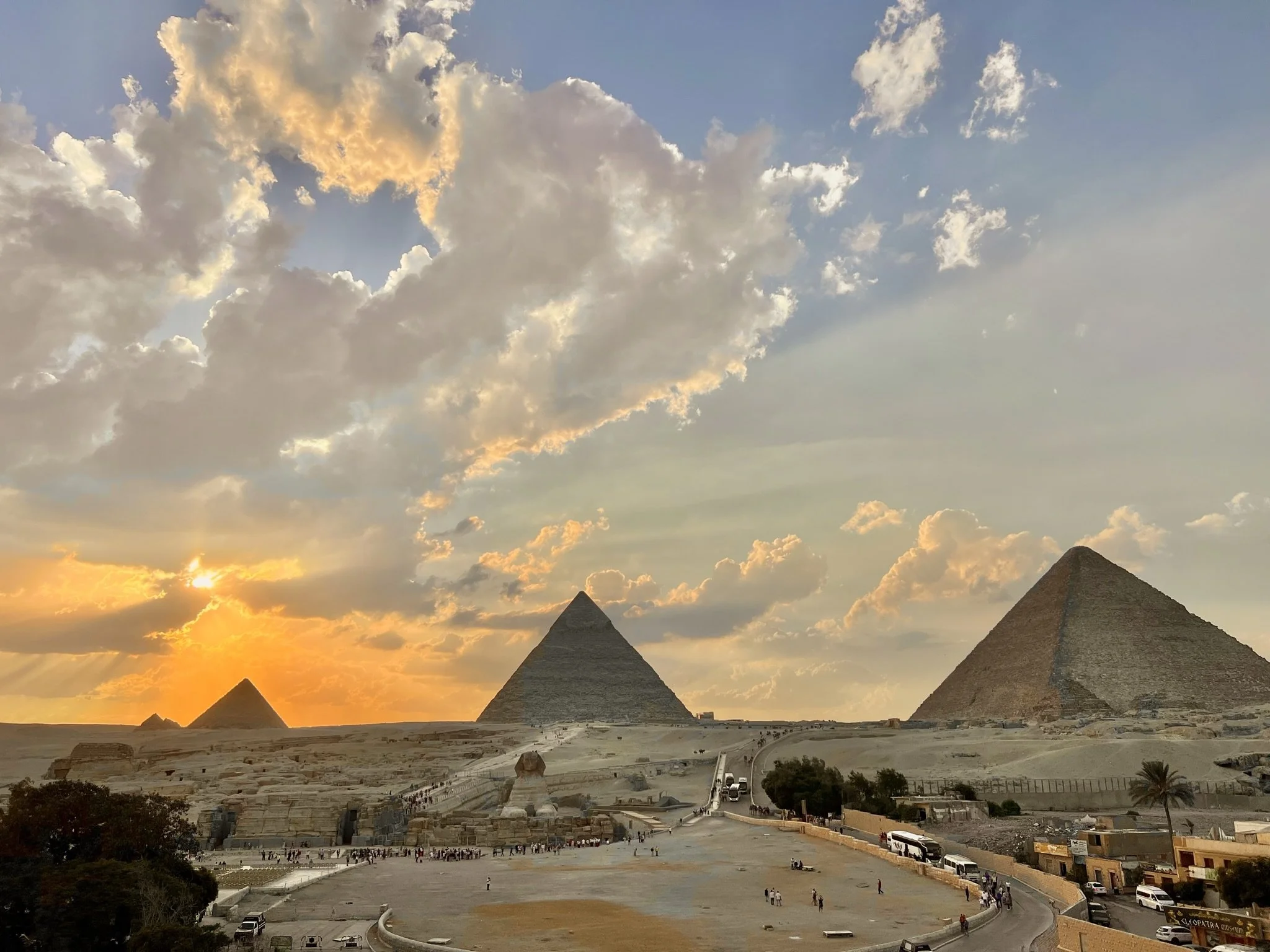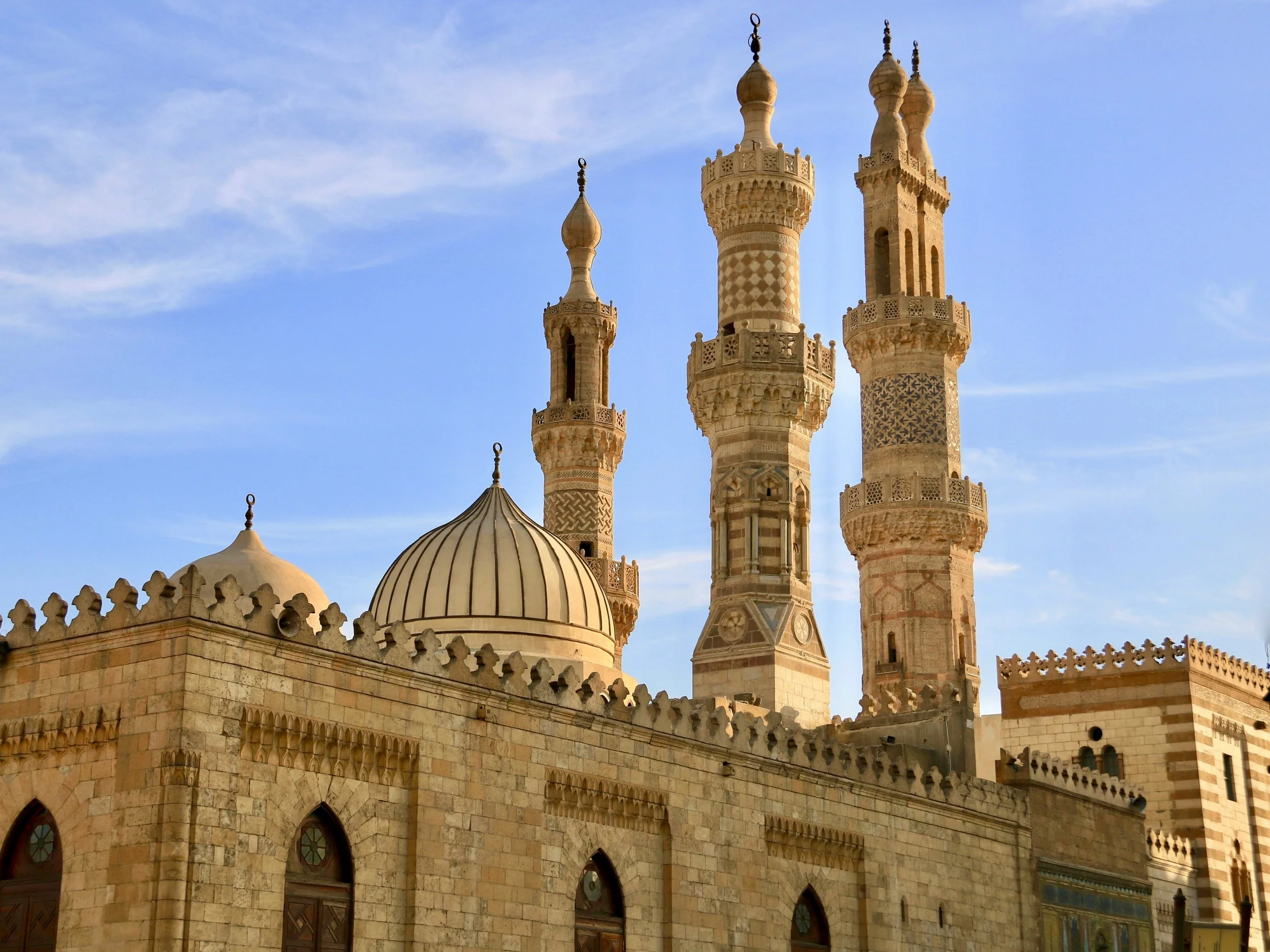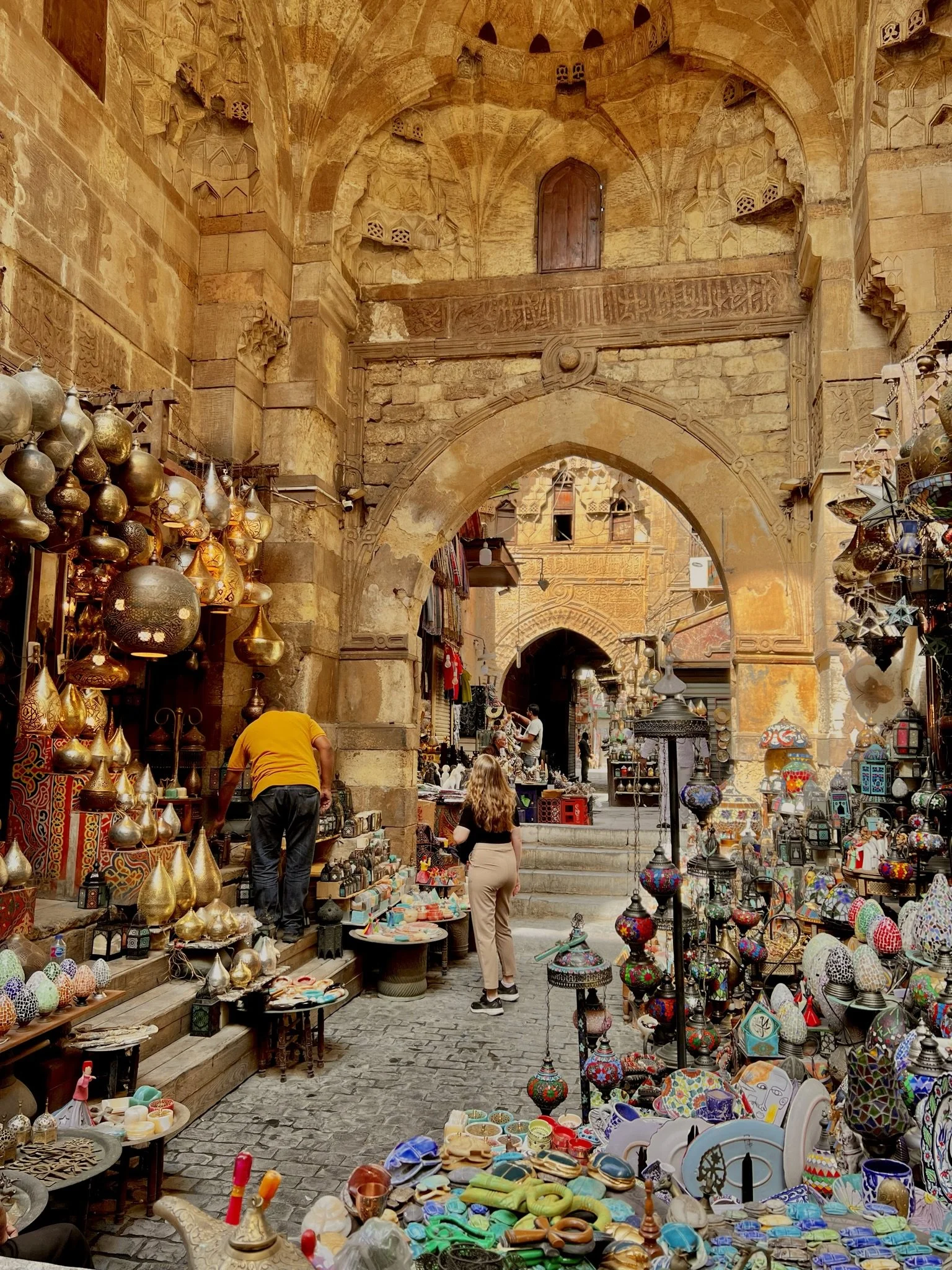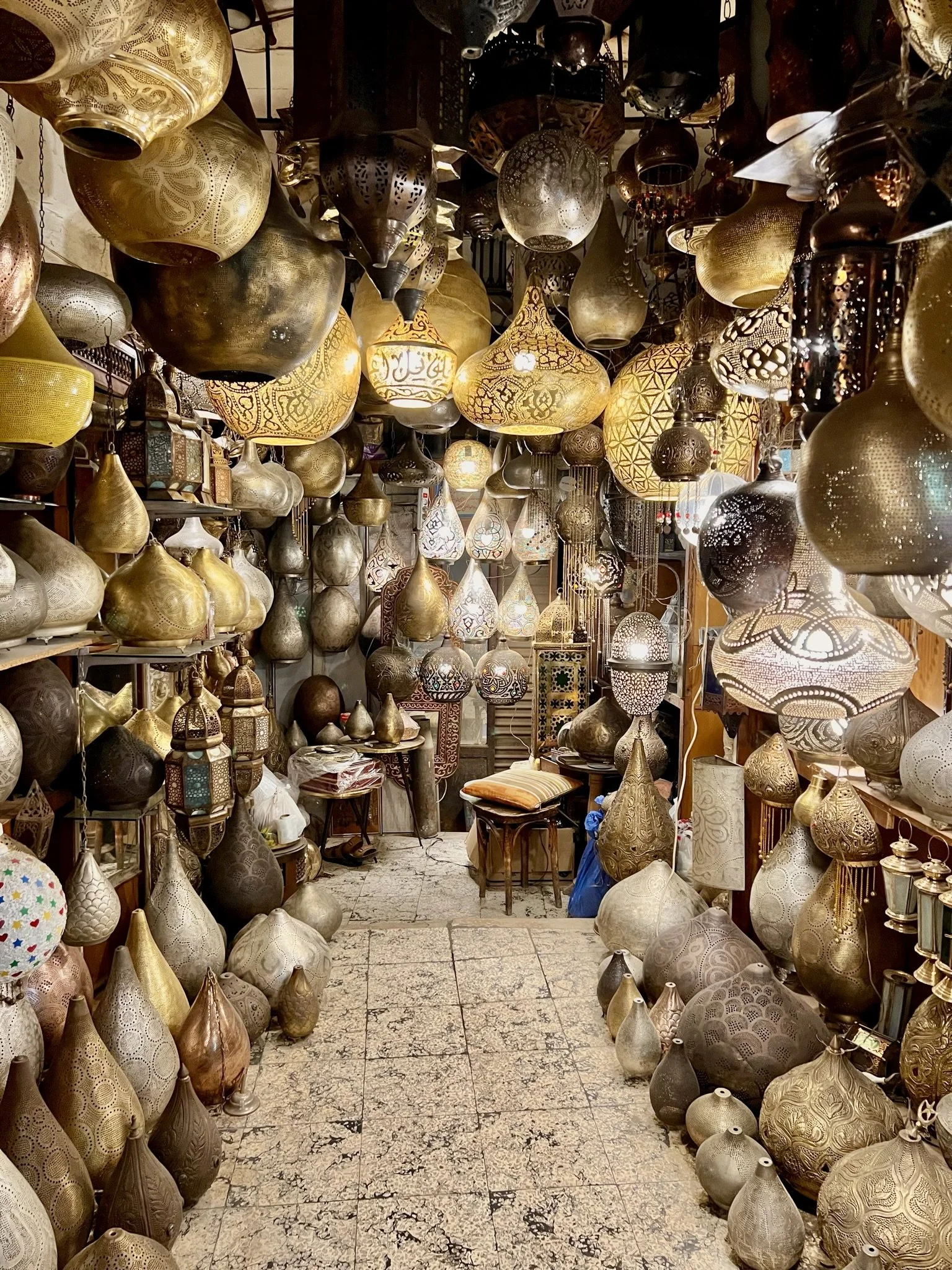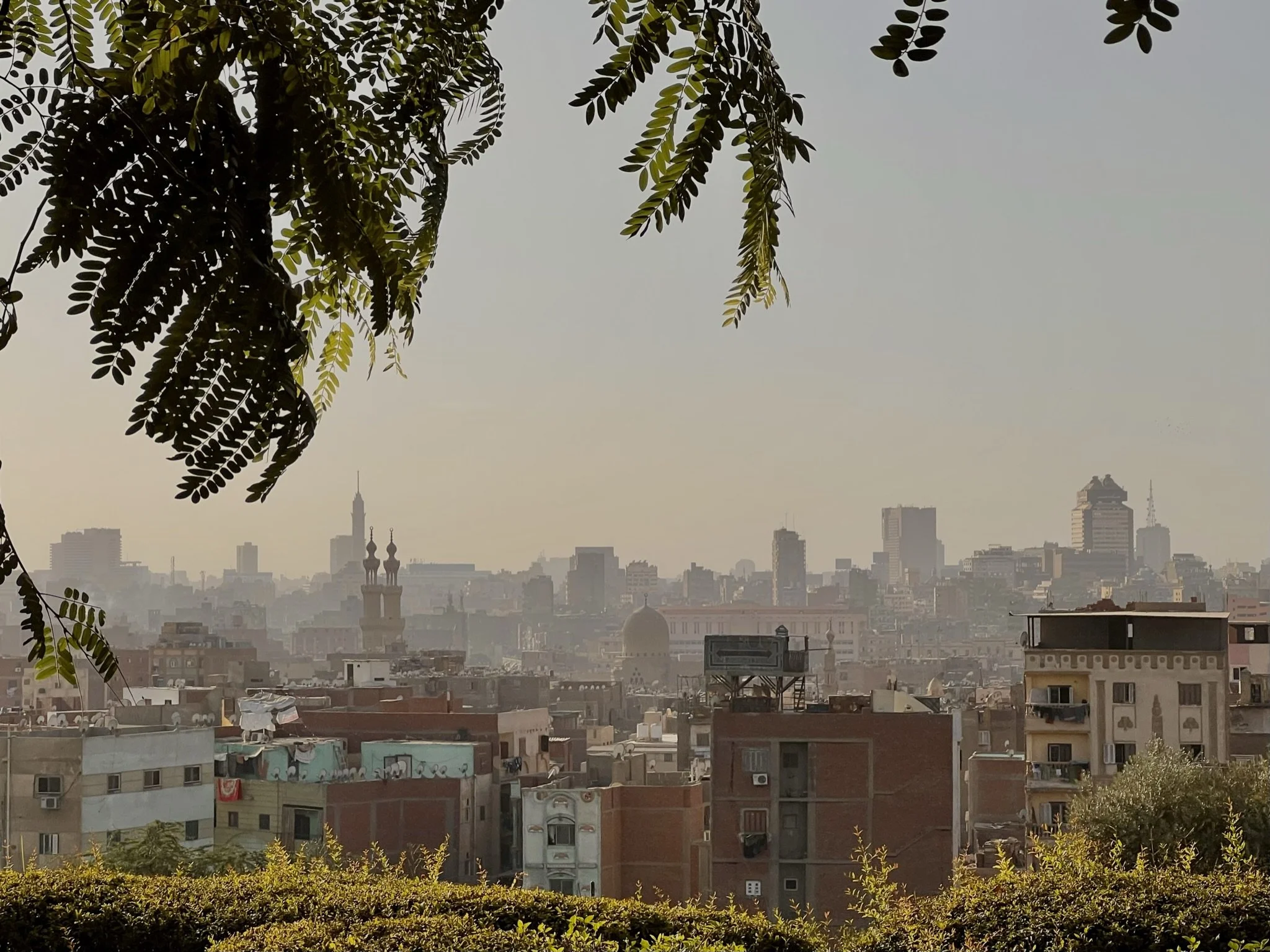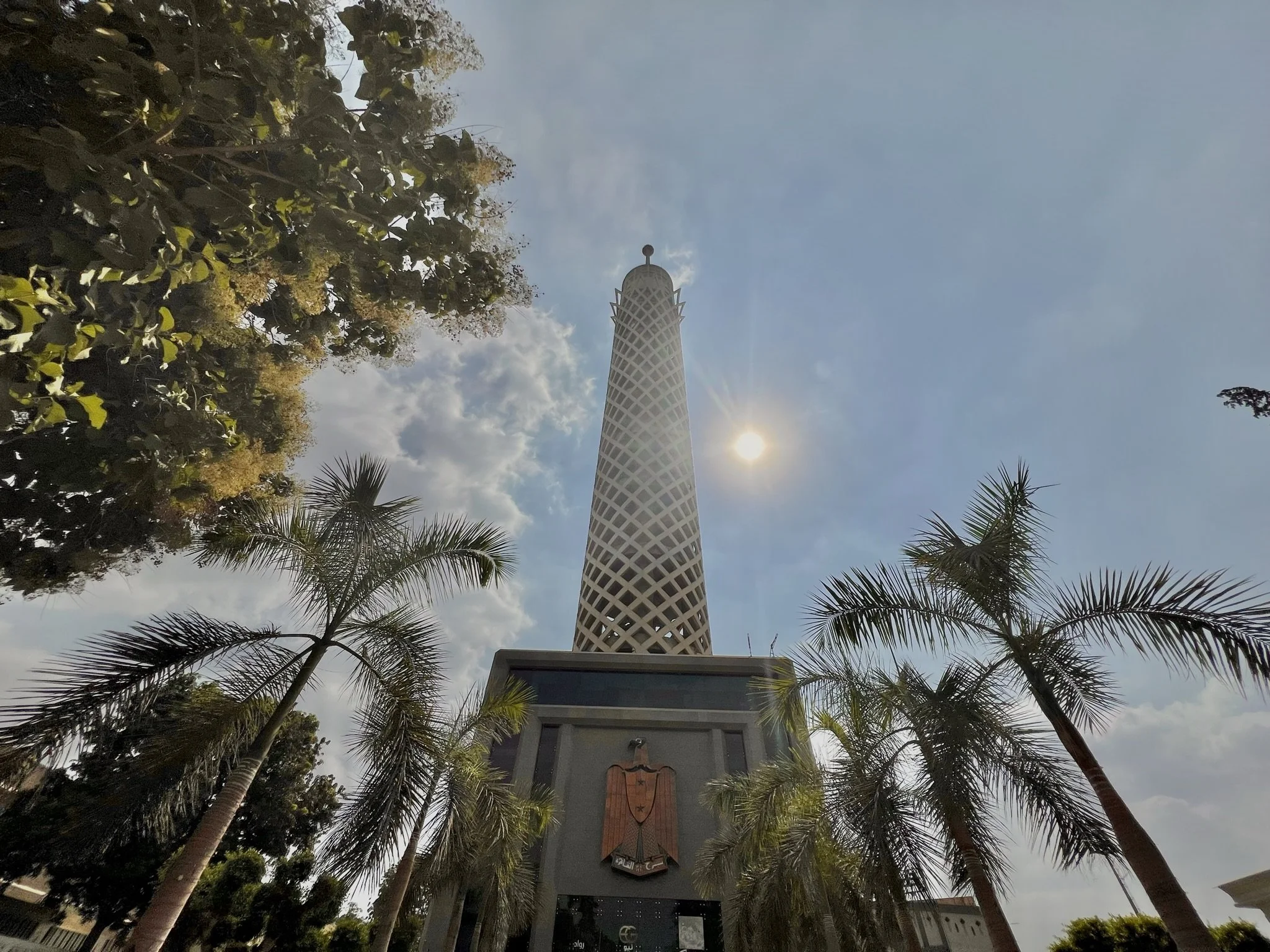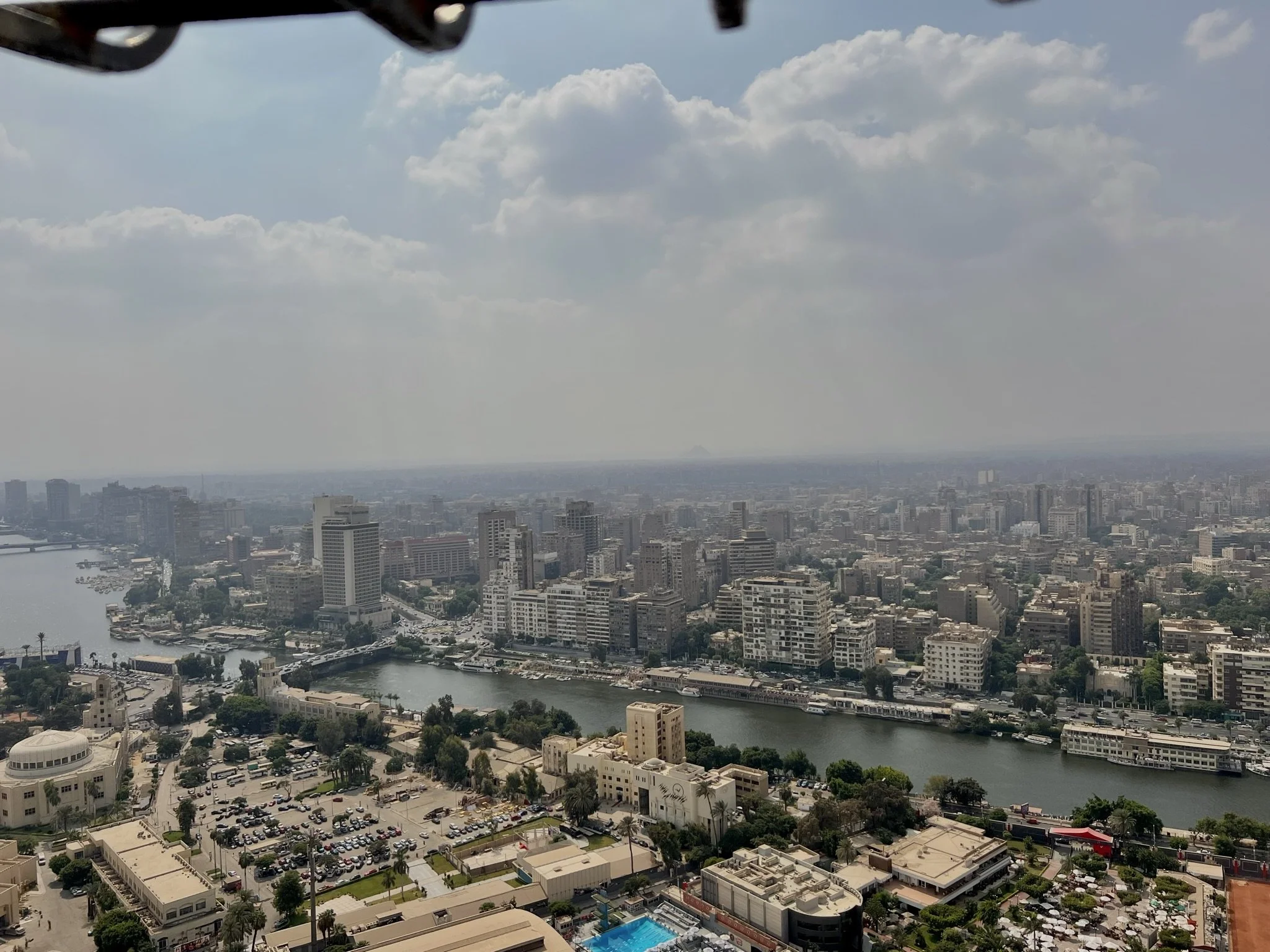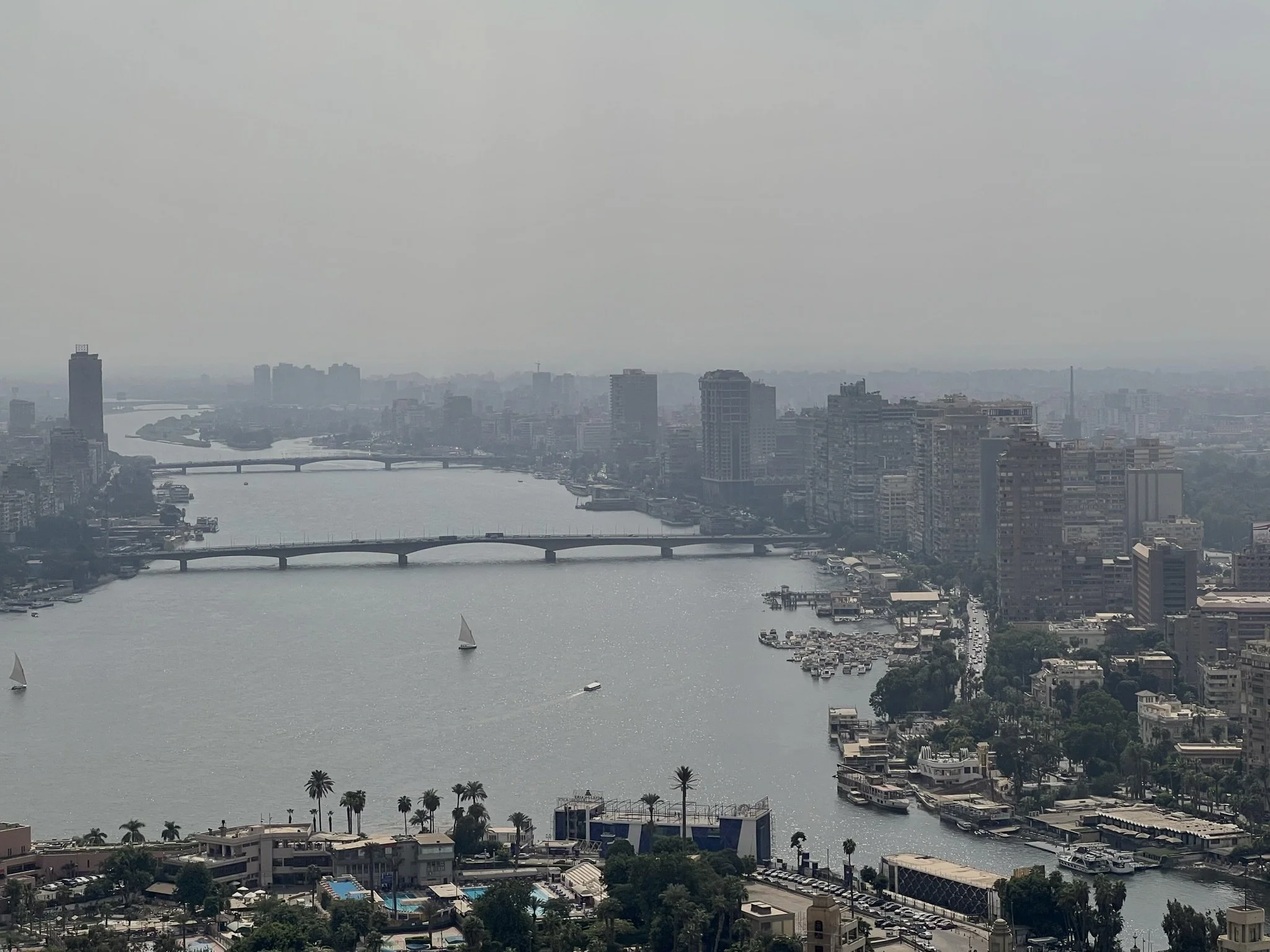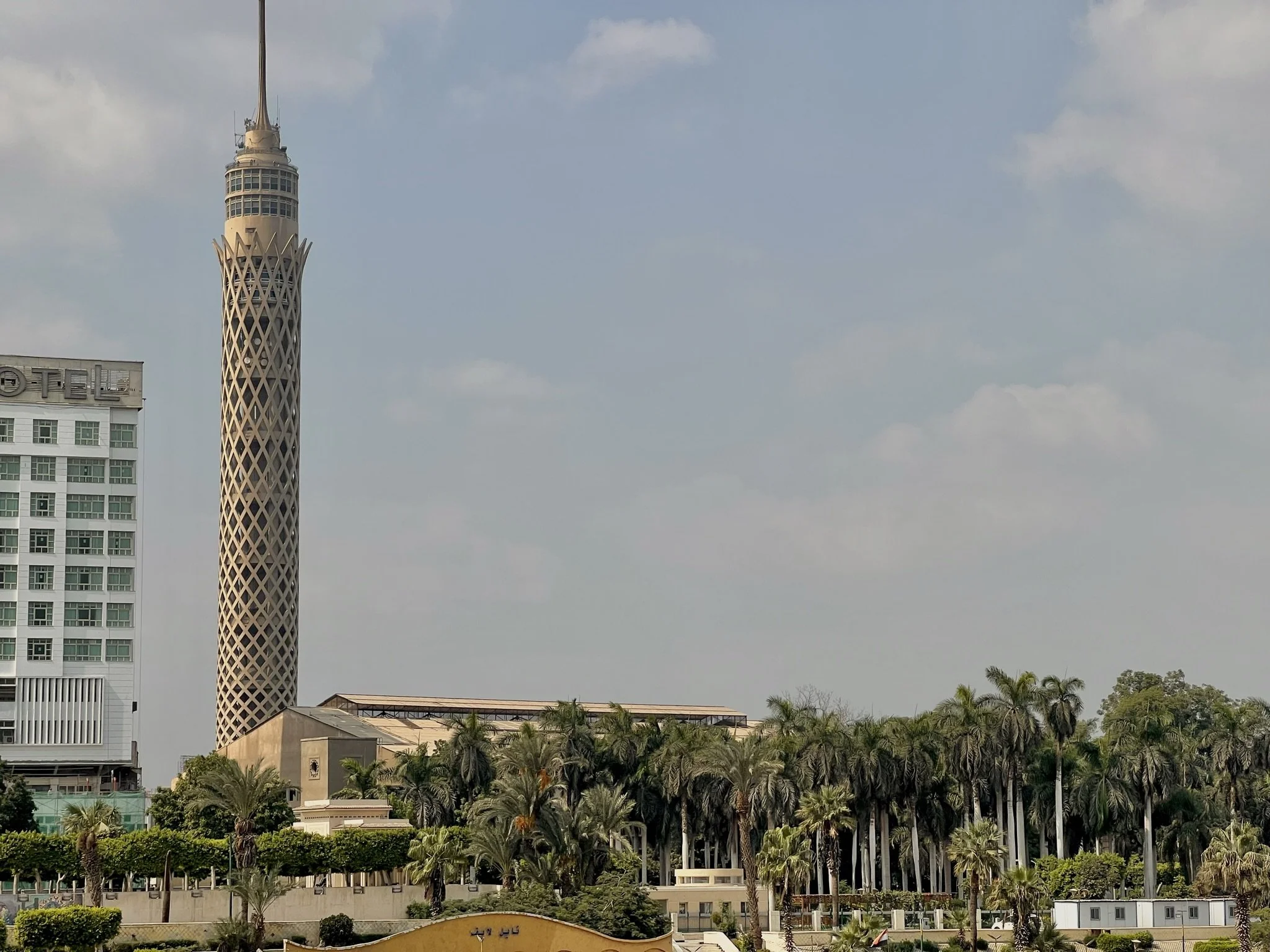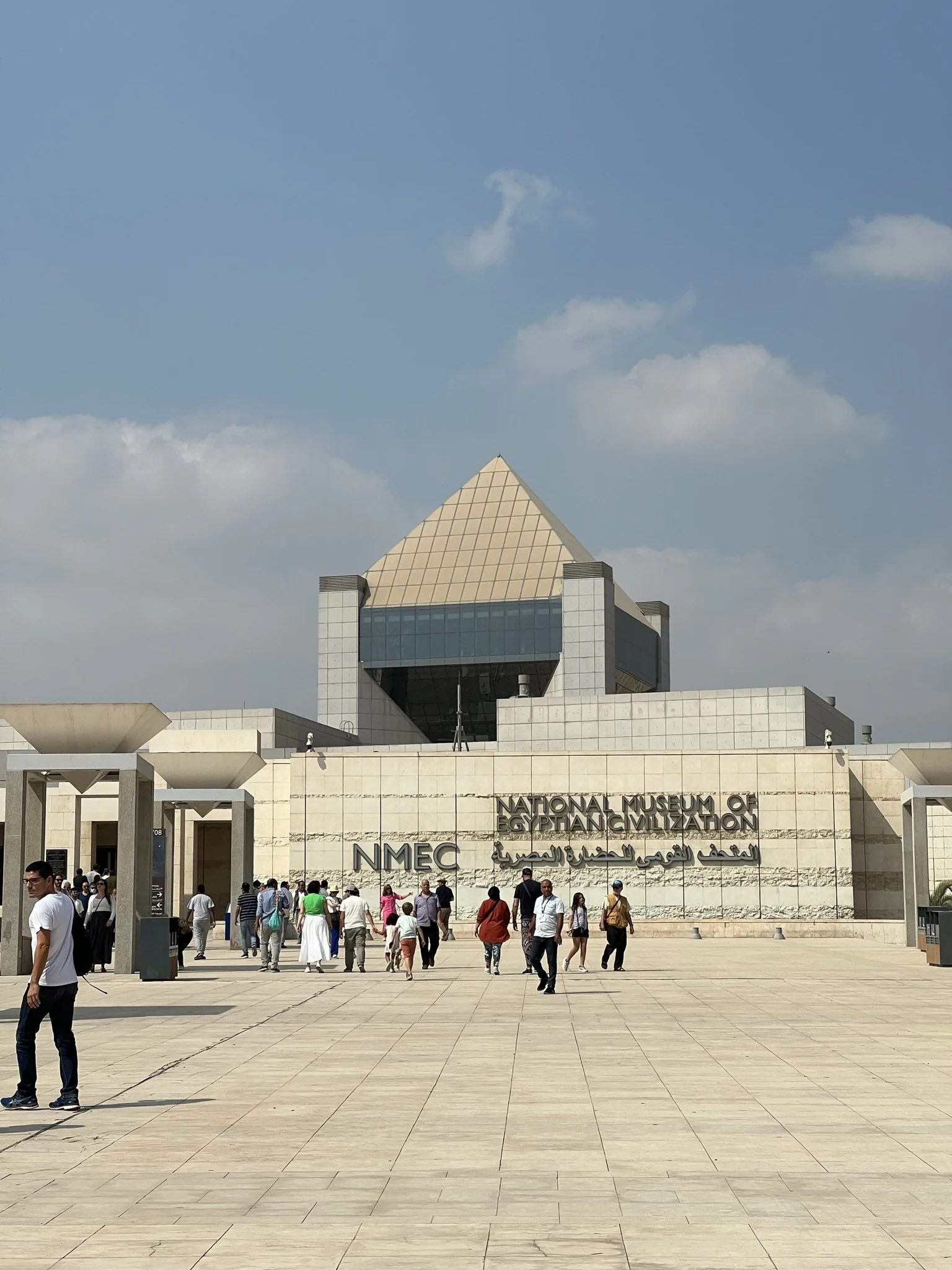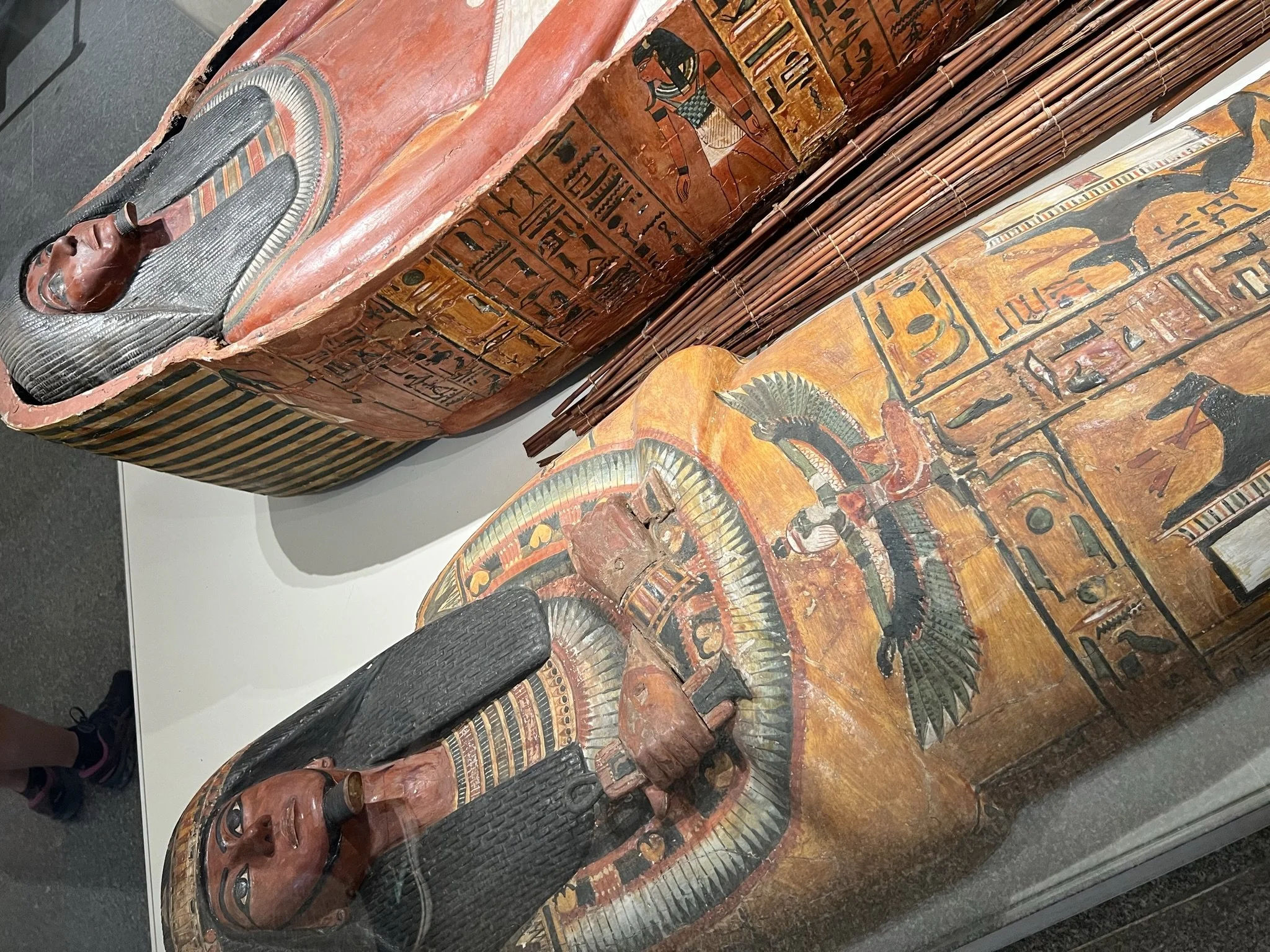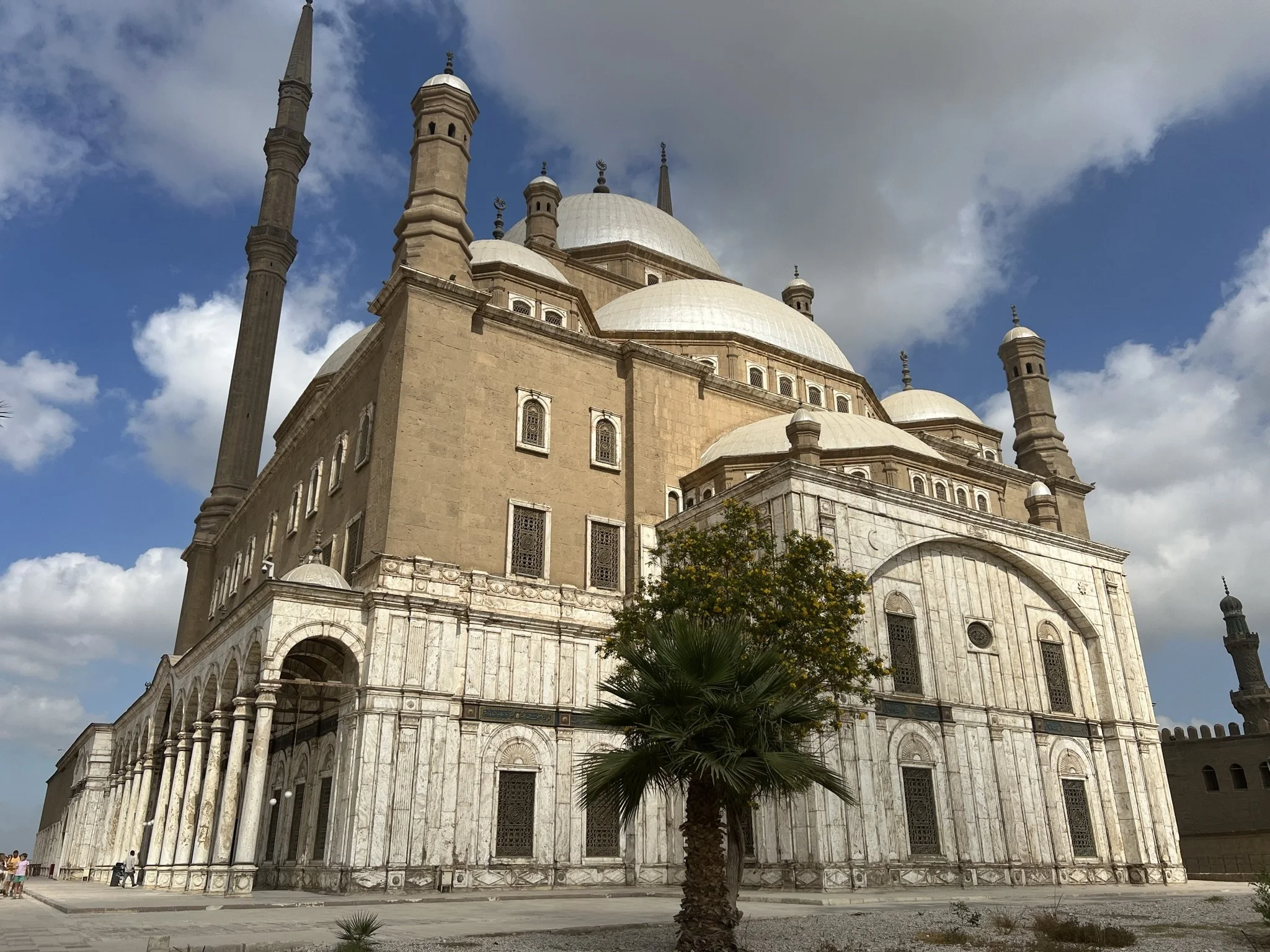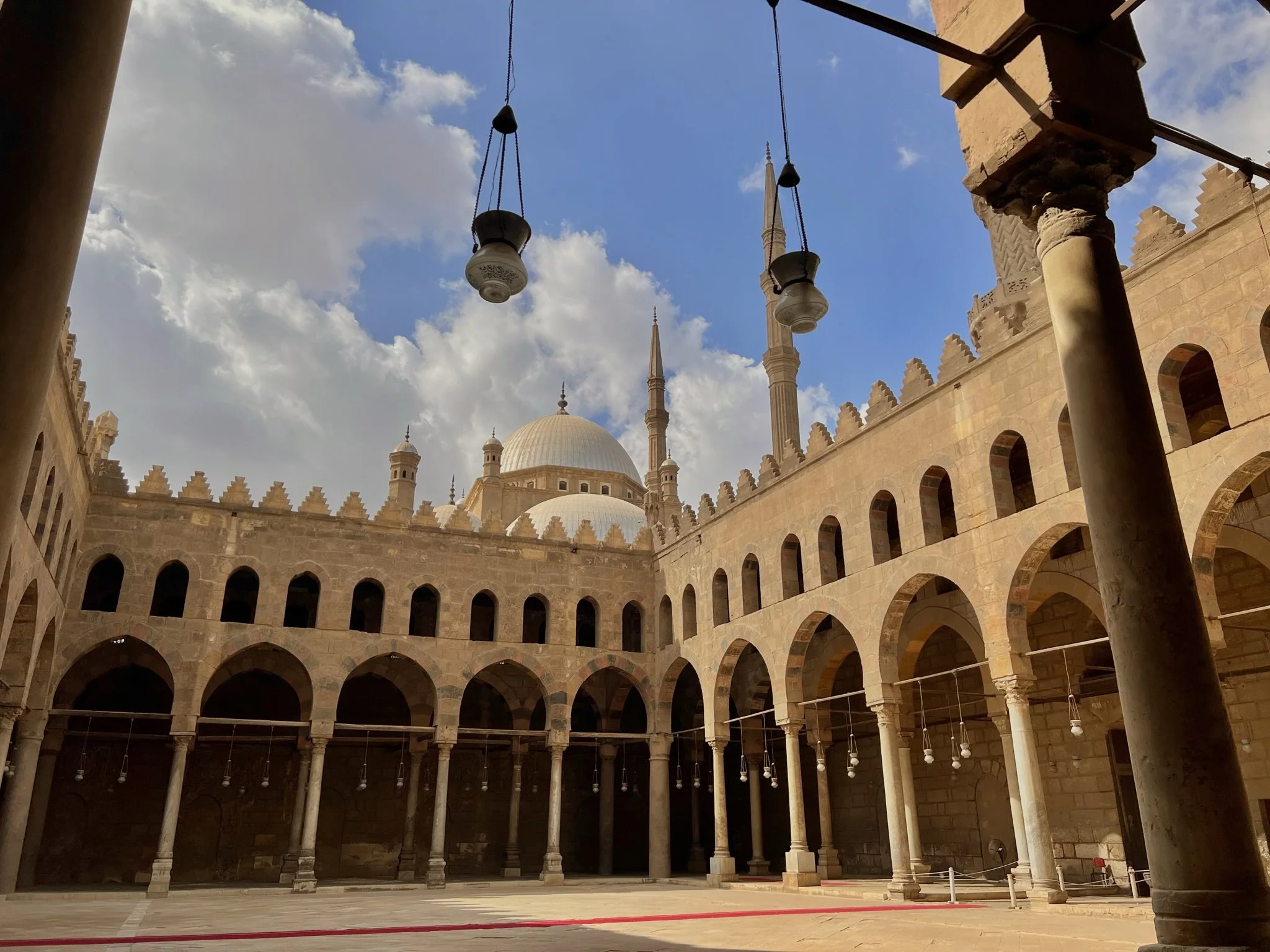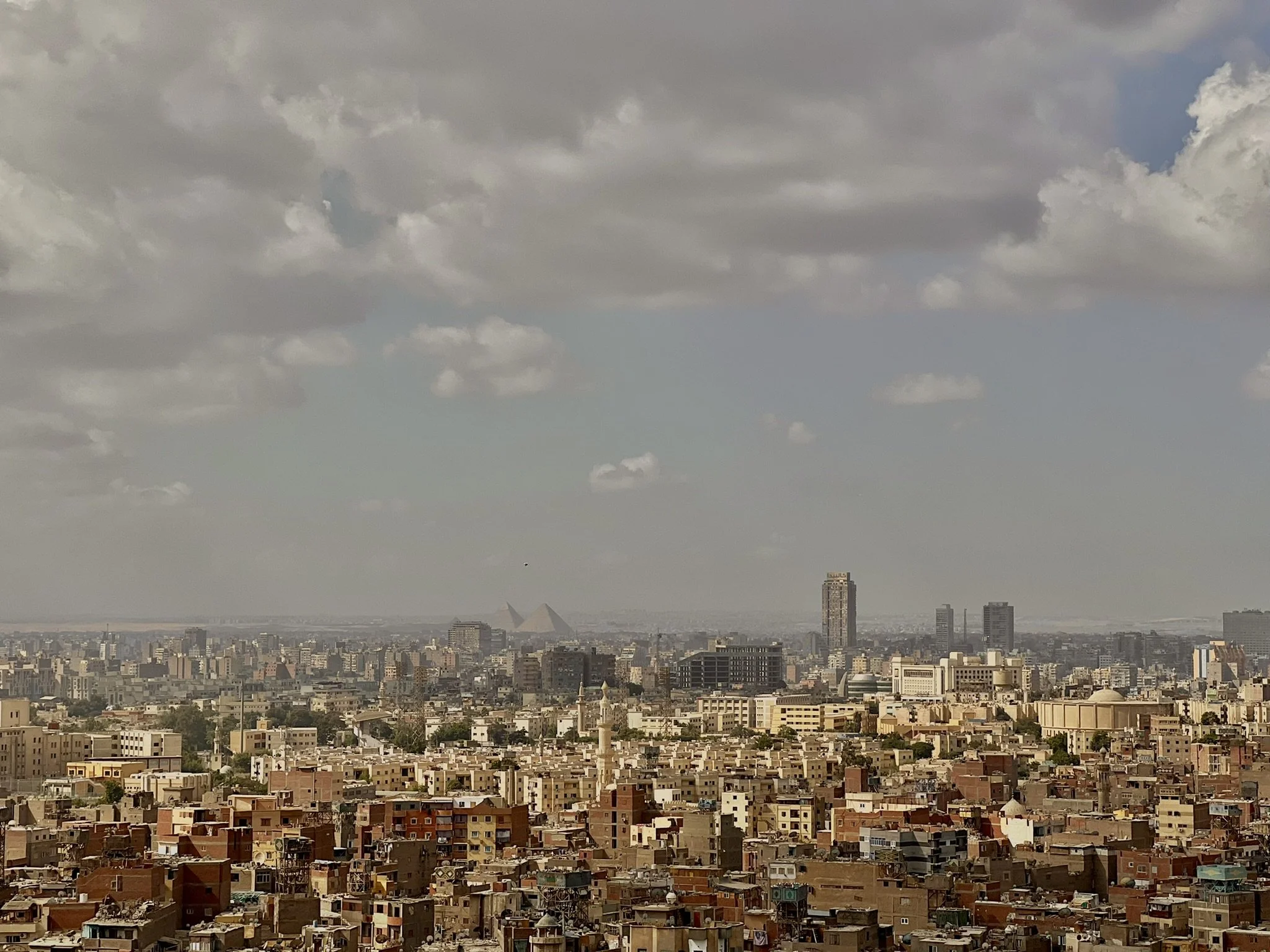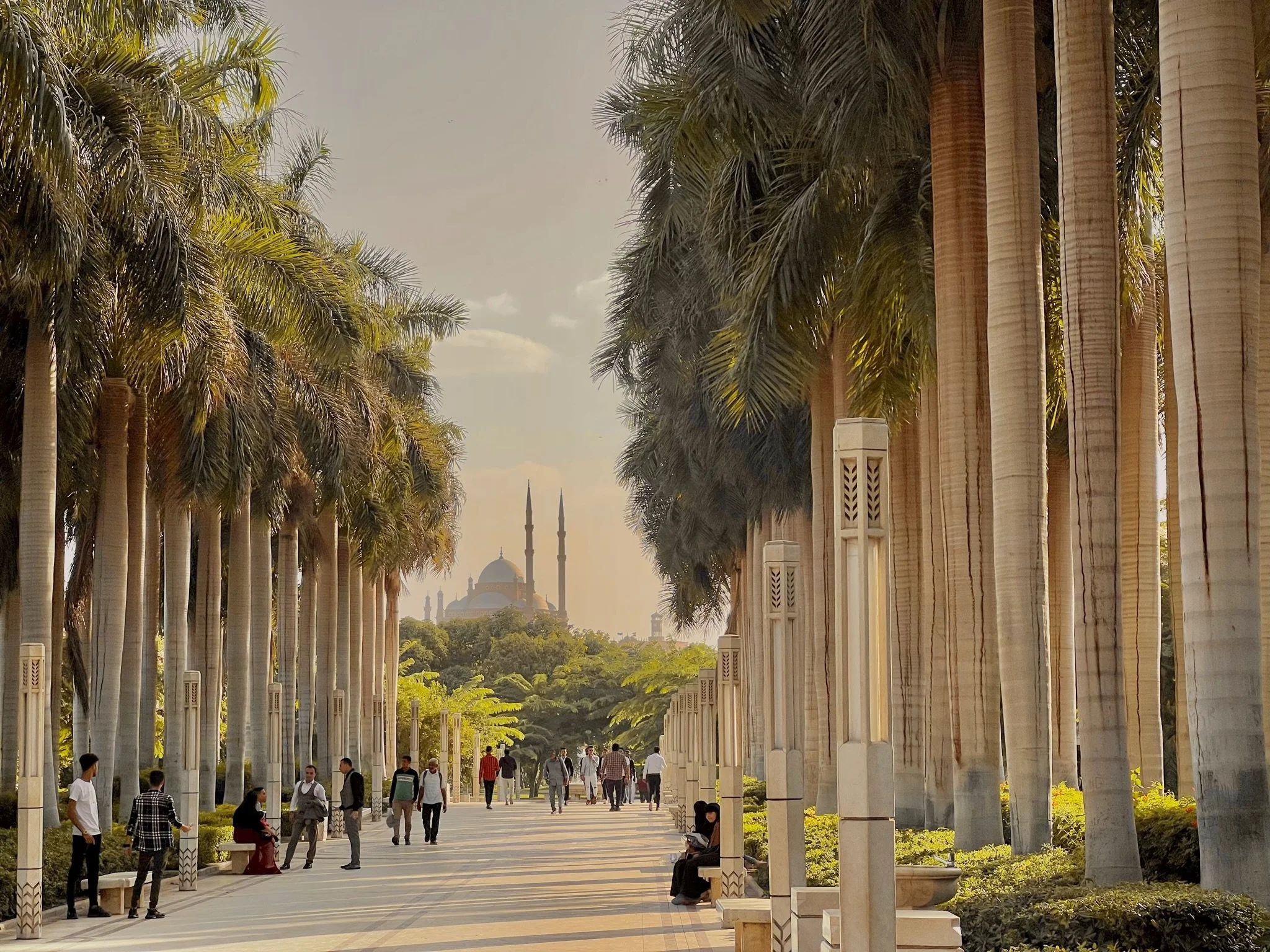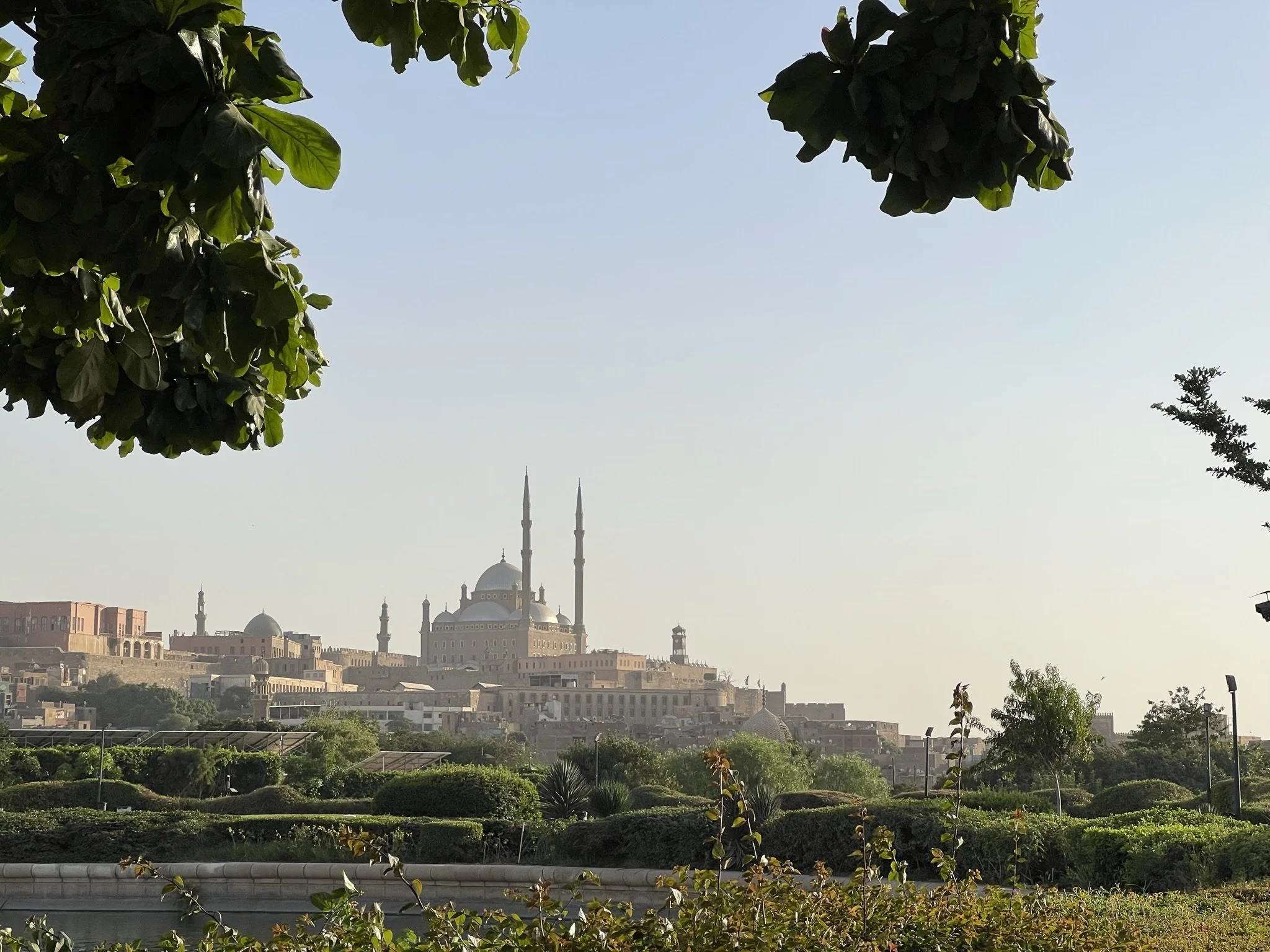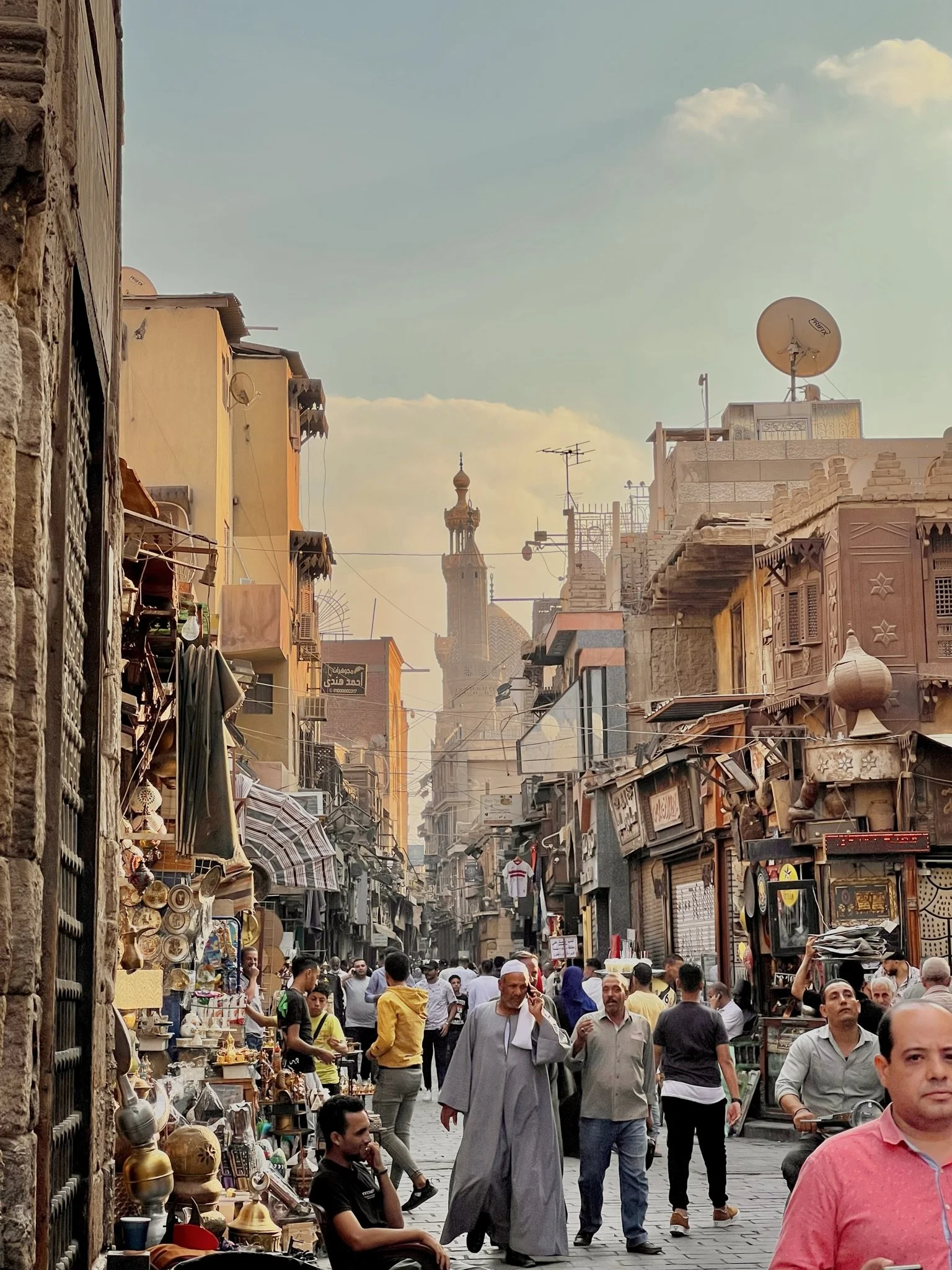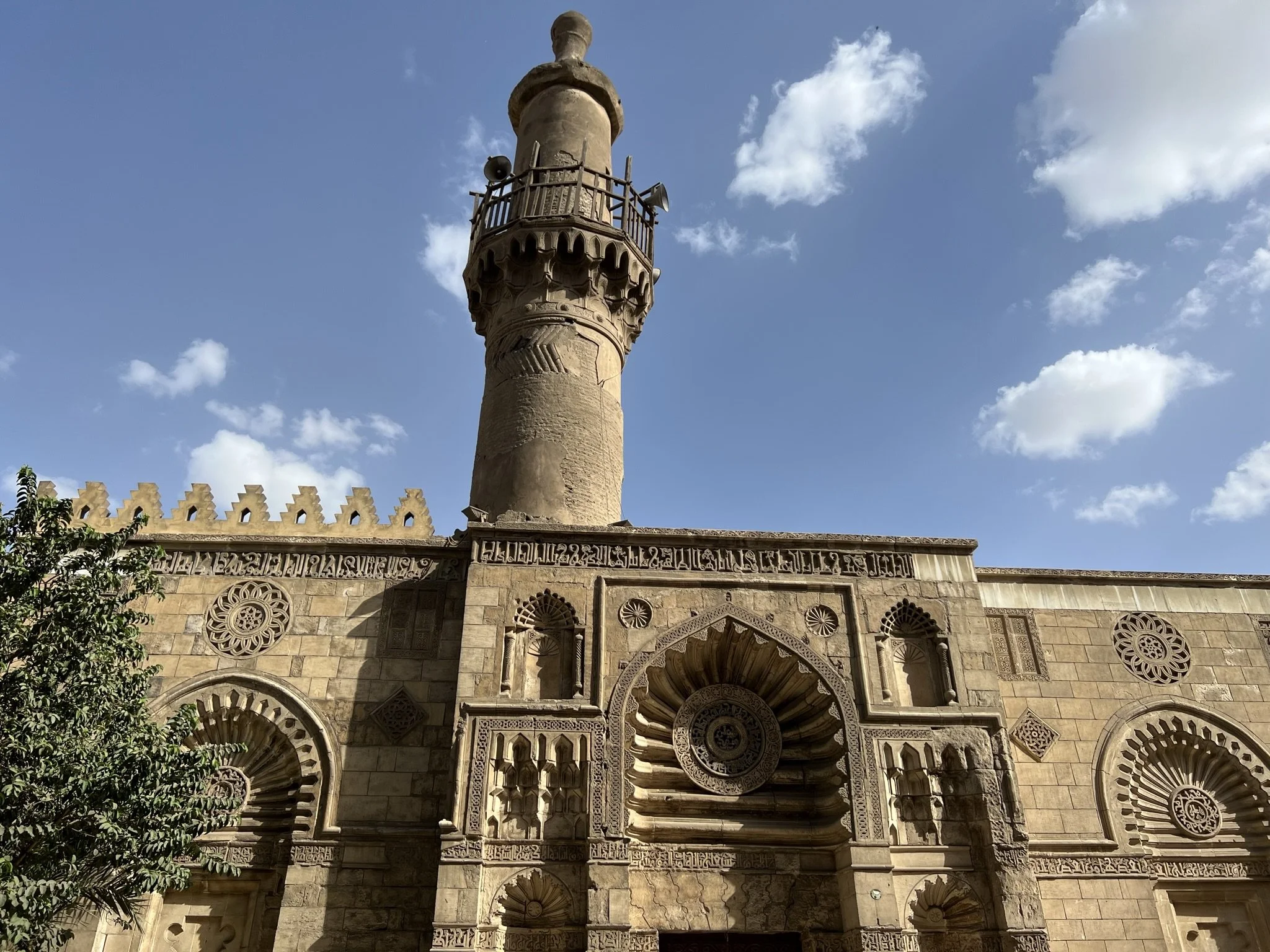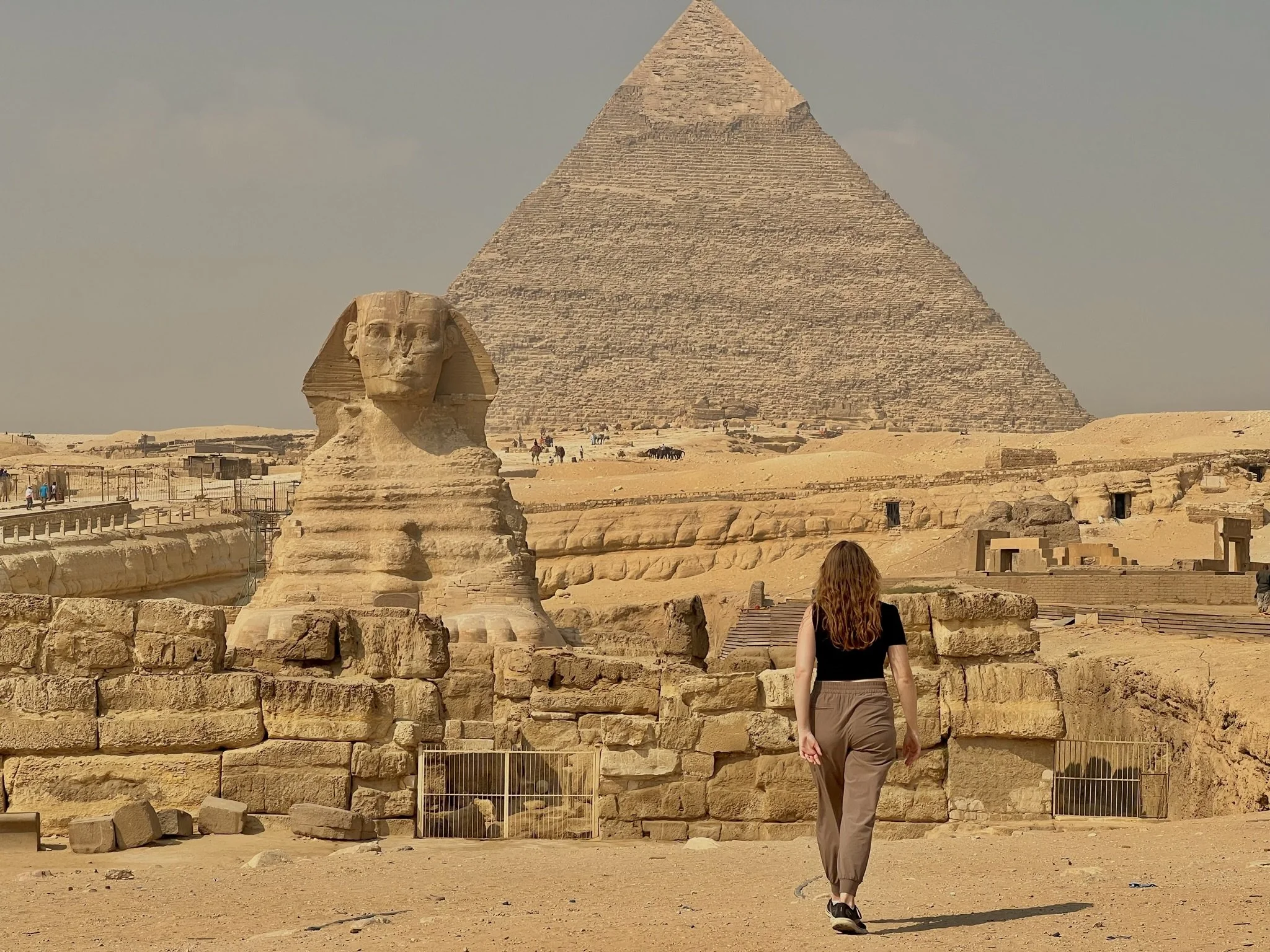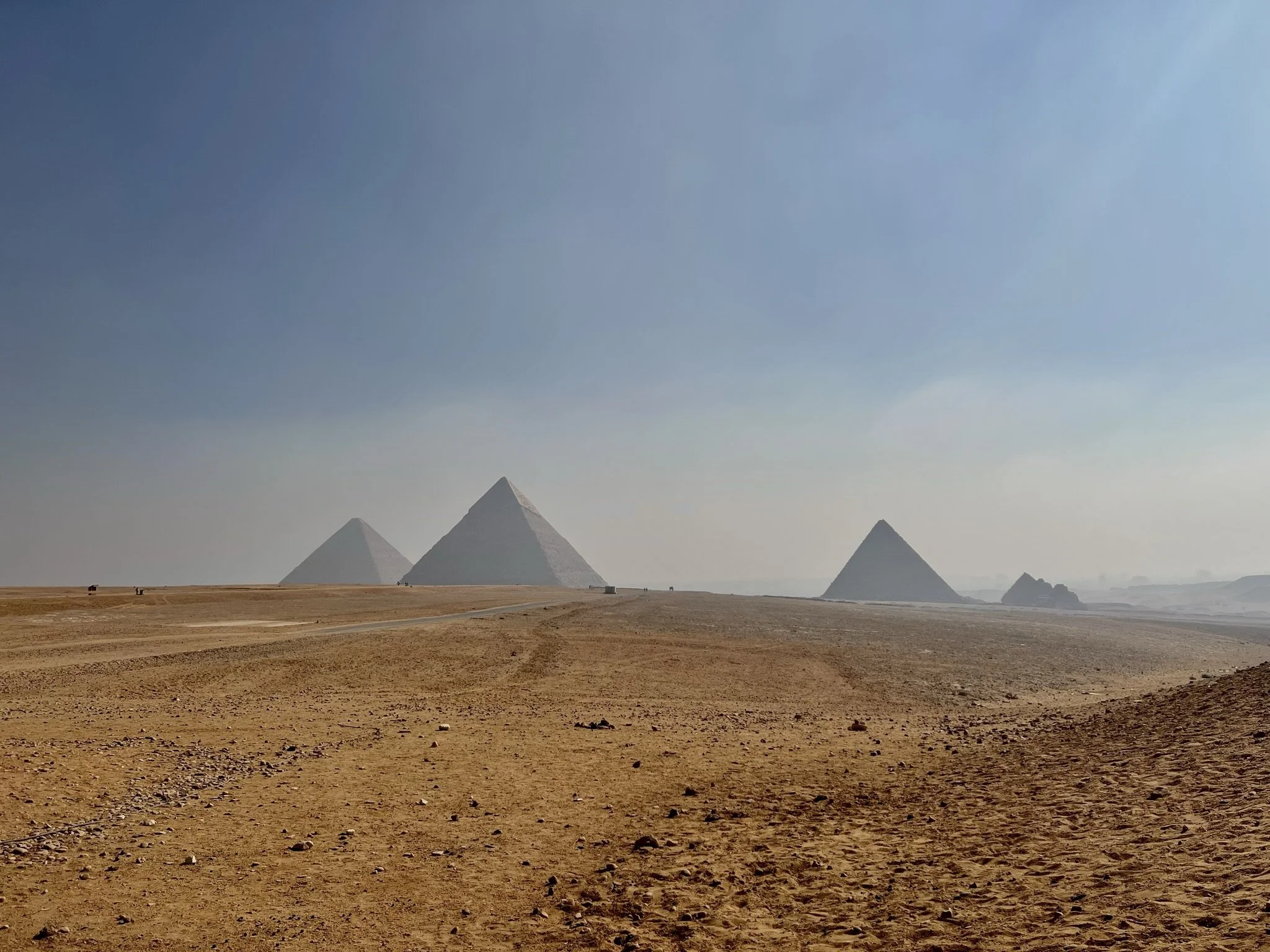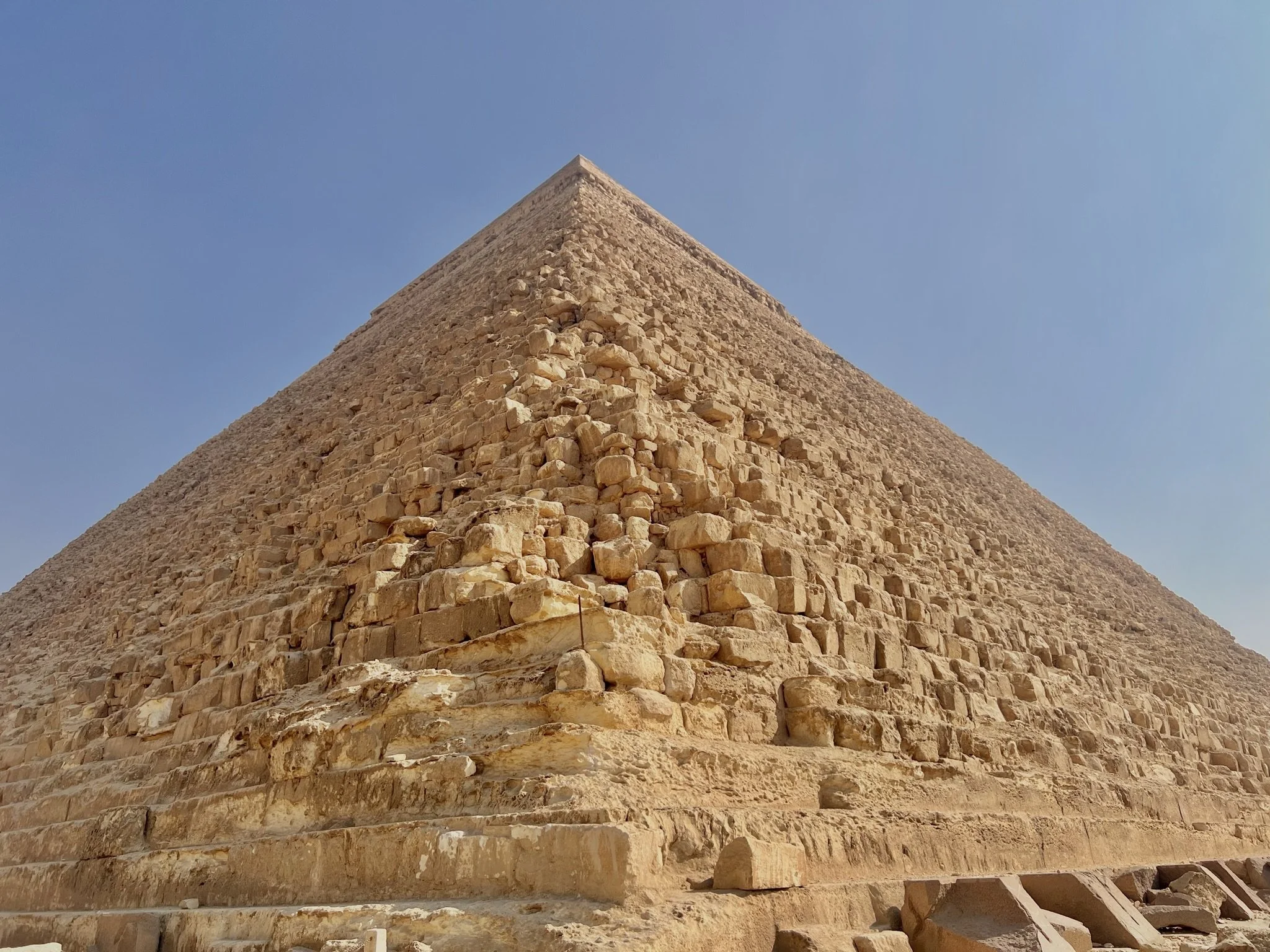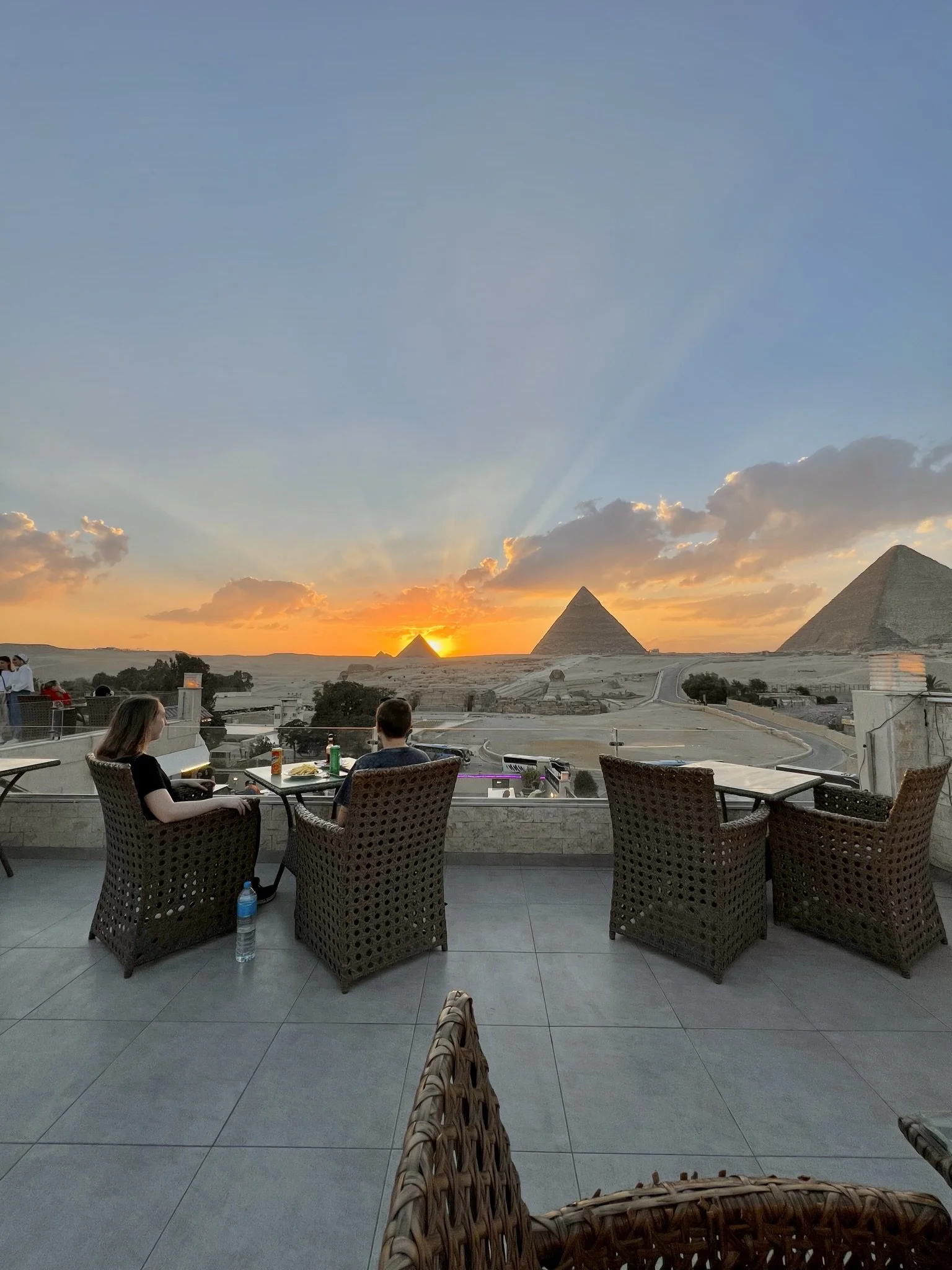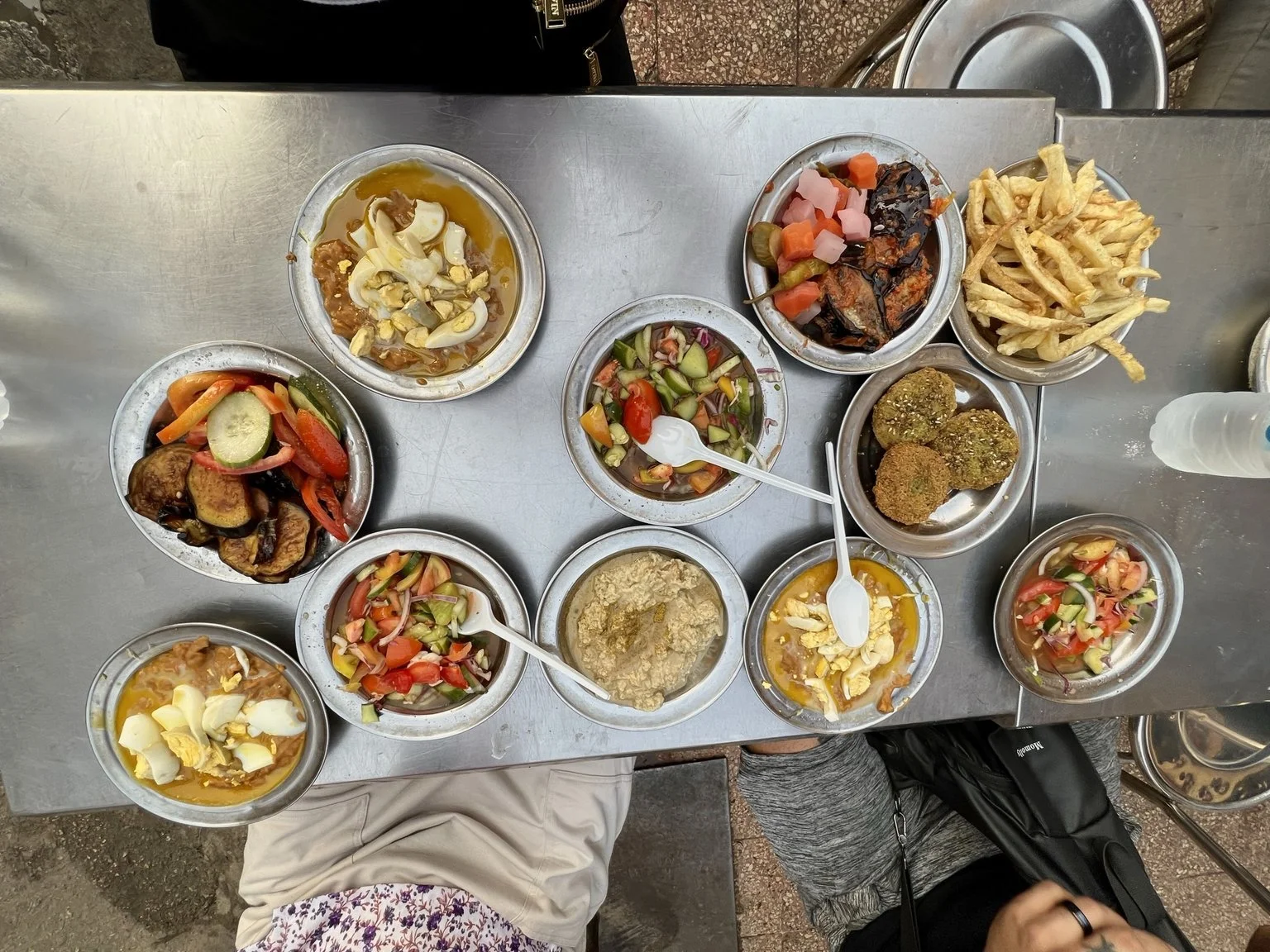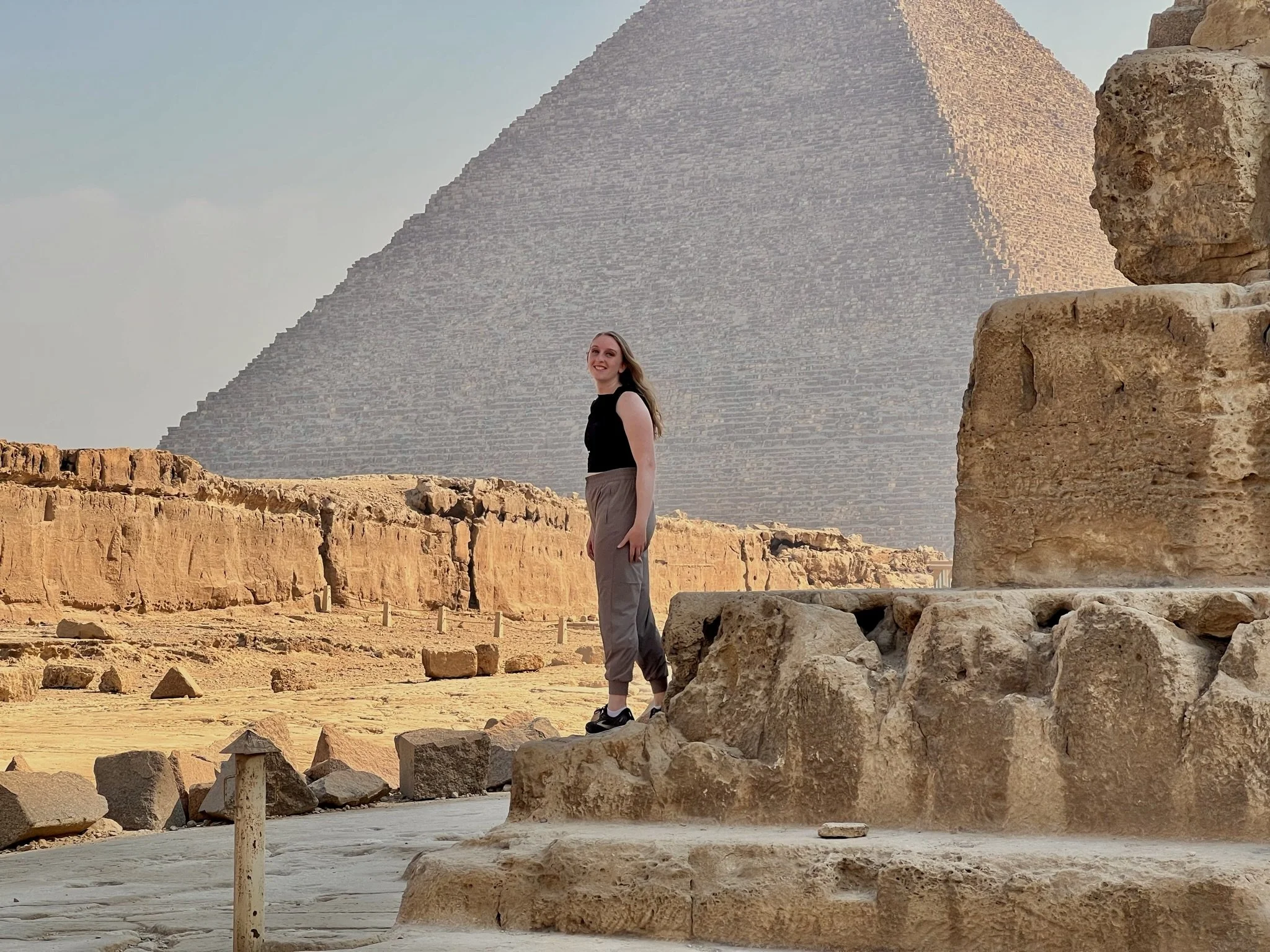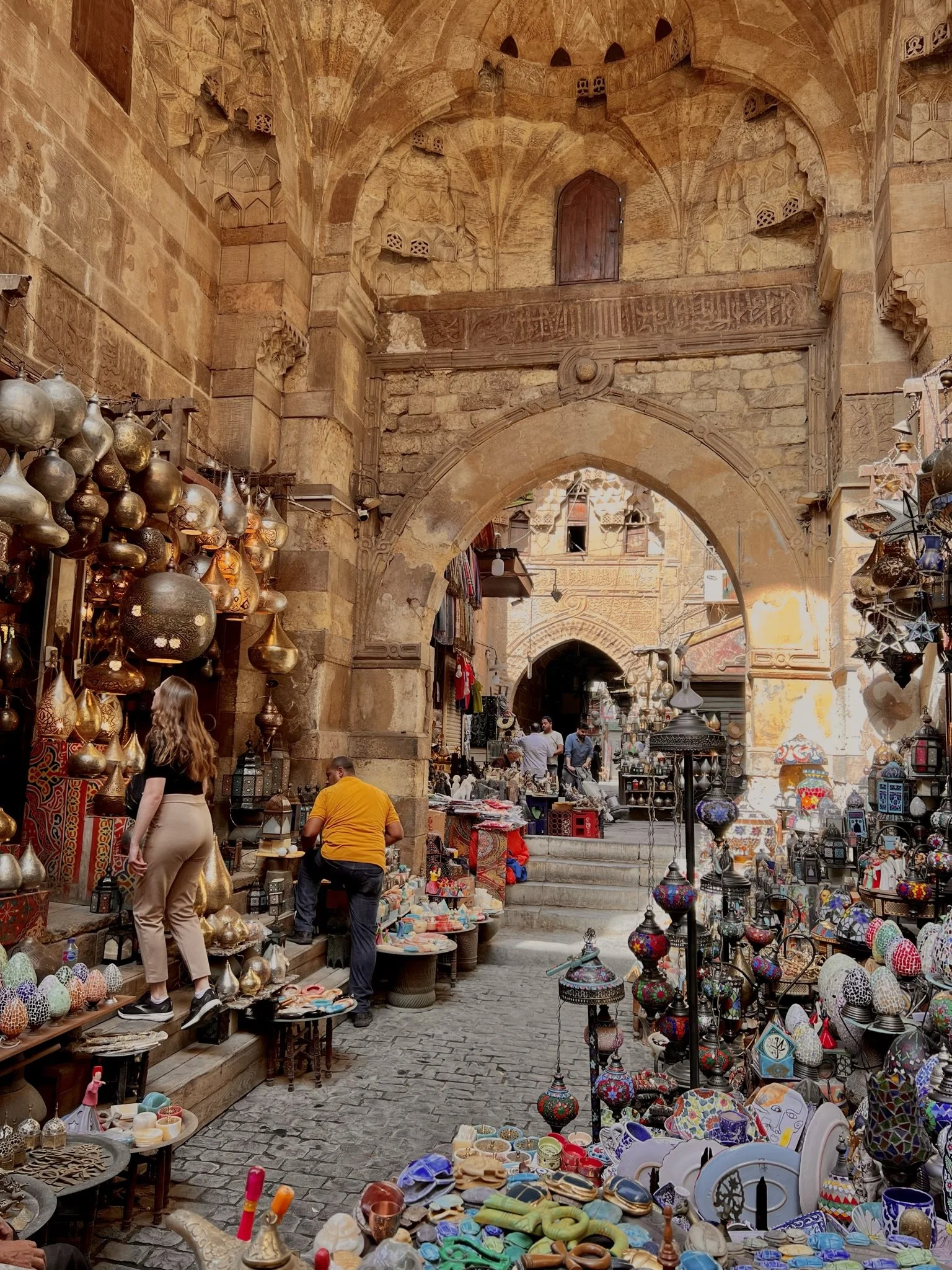
A First-Timer's Guide to Cairo, Egypt
Table of Contents
Areas to Stay in Cairo
Essential Arabic Phrases for Travelers
Ways to Get Around Cairo
Navigating Cairo's Climate: A Practical Guide to Packing
Things to Do in Cairo
Delving into Cairo's Culinary Tapestry: A Feast for the Senses
Practical Tips
Shopping in Cairo: Best Markets and Souvenirs
Embarking on a journey to Cairo, Egypt, for the first time is a thrilling exploration into the heart of ancient wonders and vibrant city life. In this comprehensive guide, we invite you to unravel the mysteries of the Sphinx, marvel at the awe-inspiring Giza Pyramids, and traverse the bustling streets of one of the world's oldest metropolises. From navigating the labyrinthine markets of Khan El Khalili to savoring the tantalizing flavors of Egyptian cuisine, our first-timer's guide is crafted to ensure an immersive and unforgettable experience.
Join us as we navigate the historical treasures, cultural nuances, and modern charms of Cairo, offering insights to make your maiden voyage an enriching adventure into the captivating soul of Egypt's capital.
First-Timers Guide to Cairo
Areas to Stay in Cairo
Choosing the perfect place to stay in Cairo is a pivotal part of your inaugural adventure in Egypt's bustling capital. From the historic charm of Zamalek's boutique hotels to the vibrant energy of Downtown Cairo, our guide unveils a curated list of accommodations tailored to various preferences. Whether you seek Nile views, cultural immersion in Old Cairo, or a tranquil escape in Maadi, we've handpicked diverse options to ensure your stay is not just comfortable but a seamless blend of modern convenience and authentic Egyptian ambiance.
Cairo Lodging: Here’s where we stayed, which was the perfect location and price for Cairo
Zamalek: An island oasis on the Nile, Zamalek offers a central location with a blend of upscale hotels, charming boutiques, and a serene ambiance, making it an ideal choice for first-time visitors seeking both convenience and tranquility.
Downtown Cairo: The bustling heart of the city, Downtown is dotted with historic landmarks, vibrant markets, and a range of accommodations, providing a lively introduction to Cairo's energy and a strategic base for exploration.
Maadi: Nestled along the Nile's southern bank, Maadi offers a suburban escape with tree-lined streets, a mix of international and local dining options, and a more relaxed atmosphere, making it suitable for those seeking a respite from the urban hustle.
Giza: For a front-row seat to the Pyramids and Sphinx, Giza is an excellent choice. With a variety of hotels overlooking these ancient wonders, first-time visitors can immerse themselves in the iconic landscape and easily explore the nearby archaeological sites.
Islamic Cairo (Old Cairo): Steeped in history, Old Cairo transports visitors back in time with its narrow lanes, historic mosques, and vibrant bazaars. Staying in this area provides an immersive experience of Cairo's rich cultural and architectural heritage.
Essential Arabic Phrases for Travelers
Engaging with the locals becomes a richer experience when armed with a handful of key Arabic phrases. Here's a helpful guide to enhance your communication and connect more authentically with the vibrant culture:
Greetings:
Hello: mrhban
Good morning: Sabah al-khayr
Good evening: Masa' al-khayr
Courtesy Phrases:
Please: Min fadlak
Thank you: Shukran
You're welcome: Ealaa Alrahb Walsaea
Basic Questions:
What is your name?: Ma ismuk?
How much does this cost?: kam yukalif hadha?
Where is...?: 'ayn hu...?
Directions:
Left: ghadir
Right: yamin
Emergency Phrases:
Help!: yusaeid
I need a doctor: 'ahtaj 'iilaa tabib
Where is the hospital?: 'ayn almustashfaa؟
Shopping and Numbers:
How much is this?: kam thaman hadha?
1, 2, 3, 4, 5: Wahed, Ithnayn, Thalatha, Arba'a, Khamsa
Ways to Get Around Cairo
Cairo Metro: Navigate the city efficiently using the Cairo Metro, a rapid transit system that connects major districts, providing a quick and cost-effective means of transportation.
Taxis: Taxis are readily available throughout Cairo, offering a convenient door-to-door option. Ensure to negotiate fares in advance or insist on using the meter for a fair rate.
Ride-Sharing Services: Utilize ride-sharing services such as Uber and Careem for a reliable and transparent pricing structure, allowing you to explore the city comfortably.
Minibusses and Tuk-Tuks: Immerse yourself in local culture by hopping on one of Cairo's colorful minibusses or negotiating a ride on a tuk-tuk, providing a lively and budget-friendly mode of transportation within neighborhoods.
Nile River Ferries: Enjoy scenic views of the city while crossing the Nile River on one of Cairo's ferry services, offering a picturesque alternative to traditional transportation.
Walking: Many of Cairo's attractions are concentrated in specific areas, making walking a delightful option for exploring neighborhoods, markets, and historic sites at your own pace.
Navigating Cairo's Climate: A Practical Guide to Packing
Preparing for your Cairo adventure begins with understanding the city's dynamic climate, where scorching summers and mild winters create diverse weather conditions. To ensure a comfortable and enjoyable stay, here's a breakdown of what to pack for each season:
Summer (June to August): Embrace lightweight, breathable clothing to combat the heat, along with sunglasses, sunscreen, and a wide-brimmed hat for protection against the intense sun.
Winter (December to February): Layering is key during Cairo's cooler months. Bring a light jacket for the evenings, comfortable walking shoes, and a scarf for added warmth on cooler nights.
Spring (March to May) and Autumn (September to November): Enjoy Cairo's most pleasant seasons with versatile clothing suitable for mild temperatures. Consider a hat and a refillable water bottle to stay comfortable and hydrated.
Modesty Matters: Respect local customs, especially when visiting religious sites, by packing modest attire that covers shoulders and knees.
Things to Do in Cairo
Cairo Tower
Cairo Tower, an iconic landmark gracing the city's skyline, stands as a symbol of modern Egypt. Soaring to a height of 187 meters, this architectural marvel offers breathtaking panoramic views of Cairo, showcasing the Nile River winding through the metropolis and providing a spectacular vista of the Giza Pyramids on the distant horizon. The tower, completed in 1961, not only serves as an observation deck but also houses rotating restaurants, allowing visitors to savor local and international cuisine while immersed in the captivating scenery of Egypt's bustling capital.
Zamalek
Zamalek island is in the heart of Cairo, which is also where the Cairo Tower is located. You can find the Cairo Opera House, numerous art galleries, and museums here. You can also visit the Zamalek Market every Saturday. This market includes a farmers' and artisans' market where they promote local products and a cooking and crafts studio.
Museums
Cairo boasts a wealth of museums that showcase Egypt's rich history and cultural heritage. Here are the top five museums to visit in Cairo:
Egyptian Museum (Museum of Egyptian Antiquities):
Overview: Home to an extensive collection of artifacts spanning thousands of years, the Egyptian Museum is a treasure trove of ancient wonders. From the iconic Tutankhamun exhibit to mummies, statues, and intricate jewelry, the museum offers an immersive journey through Egypt's Pharaonic history.
Location: Tahrir Square, Downtown Cairo.
The Museum of Islamic Art:
Overview: Housed in a stunning historic building, the Museum of Islamic Art boasts a vast collection of Islamic artifacts, including textiles, ceramics, manuscripts, and exquisite woodwork. The museum provides insights into the artistic and cultural achievements of Islamic civilizations.
Location: Bab El-Khalq, Cairo.
Coptic Museum:
Overview: Situated in the heart of Old Cairo, the Coptic Museum is dedicated to preserving Egypt's Christian heritage. It features a remarkable collection of Coptic art, including manuscripts, textiles, and religious artifacts, providing a glimpse into the early Christian period in Egypt.
Location: Mar Girgis, Old Cairo.
The Museum of Modern Egyptian Art:
Overview: For enthusiasts of contemporary art, this museum showcases a diverse collection of Egyptian modern and contemporary art. From paintings and sculptures to multimedia installations, the museum reflects the evolution of Egypt's artistic landscape.
Location: Gezira Exhibition Grounds, Zamalek.
The Manial Palace Museum:
Overview: Nestled on Manial Island, this unique museum is part of the historic Manial Palace complex. It houses an eclectic collection of artifacts, including rare manuscripts, textiles, and Islamic ceramics, offering a glimpse into the lifestyle of Egypt's royal family.
Location: Rhoda Island, Cairo.
Mohamed Ali mosque
This mosque is perched at the top of a hill in Cairo with incredible views of the city - you can even see the pyramids. This mosque in Cairo was designed by the same architect who designed the famous Sultan Ahmed Mosque in Istanbul, Turkey. The cost to enter the grounds is 180 EGP, and in my opinion, is worth paying to get to walk around and learn about this beautiful mosque.
Al-Azhar Park
Al-Azhar Park, a verdant oasis nestled in the heart of historic Cairo, stands as a testament to urban revitalization and environmental conservation. Established in 2005, this beautifully landscaped park spans 30 acres and offers a tranquil retreat amid the bustling city. Here's a closer look at Al-Azhar Park:
Historical Significance: Reclamation Project: Al-Azhar Park is the result of an ambitious project to transform a neglected area into a vibrant green space. It was built on the historic "Trash Mountain," a centuries-old landfill.
Landscape and Design: Islamic Gardens: The park is designed in the style of traditional Islamic gardens, featuring geometric patterns, fountains, and lush greenery. It offers a harmonious blend of contemporary aesthetics and historical design elements.
Panoramic Views: Cairo's Skyline:* One of the park's highlights is its elevated location, providing panoramic views of Cairo's skyline, including the historic districts of Islamic Cairo and landmarks such as the Citadel of Saladin.
Architectural Marvels: Al-Azhar Park Mosque: At the center of the park sits the majestic Al-Azhar Park Mosque, an architectural gem adorned with intricate details. It adds a cultural and spiritual dimension to the park.
Restaurants and Cafes: Relaxation Spaces: Al-Azhar Park is dotted with cafes and restaurants, offering visitors a chance to relax and enjoy refreshments amidst the scenic surroundings.
Cultural Events: Community Engagement: The park often hosts cultural events, concerts, and festivals, fostering community engagement and promoting the appreciation of arts and culture.
Khan el-Khalili & Al Moez Ldin Allah Al Fatmi
Khan el-Khalili is a large, historic bazaar and souk in the historic center of Cairo. This is where we did a lot of our souvenir shopping because there are a lot of different stands to try to bargain with to get the best price. Hot tip: always try to negotiate on the first price they say when you ask how much something is.
This bazaar is also right next to the oldest street in Cairo, Al Moez Ldin Allah Al Fatmi, which I highly recommend you check out when you’re at the bazaar. It was one of my favorite areas to explore in Cairo.
Check out my YouTube Video: One Week in Egypt: The Ultimate Itinerary
The Great Pyramid of Giza and the Sphinx: Marvels of Ancient Egypt
The Great Pyramid of Giza, one of the Seven Wonders of the Ancient World, and the enigmatic Sphinx, standing guard nearby, are iconic symbols of Egypt's ancient civilization. Here's an overview of these extraordinary structures and some recommendations for visitors:
If you’re looking for the best tour guide, I highly recommend this tour: Cairo: Female-Guided Pyramids, Bazaar, and Museum Tour
The Great Pyramid of Giza:
Historical Significance: Constructed over 4,500 years ago during the reign of Pharaoh Khufu, the Great Pyramid is the largest of the three pyramids on the Giza Plateau. It was built as a monumental tomb, a testament to the engineering prowess of ancient Egyptians.
Architectural Marvel: Composed of approximately 2.3 million limestone blocks, each weighing several tons, the pyramid's precision in construction and alignment with cardinal points continues to awe historians and architects.
Interior Exploration: While the interior chambers are open to visitors, be prepared for narrow passageways and limited space. The King's Chamber and the Grand Gallery offer insights into the pyramid's internal structure.
The Sphinx:
Enigmatic Guardian: Adjacent to the Great Pyramid stands the Sphinx, a colossal limestone statue with the body of a lion and the head of a pharaoh—believed by many to represent Pharaoh Khafre. The Sphinx is thought to guard the pyramids and possess mystical significance.
Mystery and Restoration: The Sphinx's missing nose and beard contribute to its air of mystery, with the original features subject to debate and speculation. Ongoing restoration efforts aim to preserve this ancient marvel for future generations.
Recommendations for Visitors:
Beat the Crowds: Visit early in the morning to enjoy a quieter and more atmospheric experience. The soft morning light also enhances the grandeur of the structures.
Guided Tours: Consider hiring a knowledgeable guide to provide historical context and share fascinating stories about the pyramids and the Sphinx. Guides can enhance your understanding of the site's significance.
Comfortable Attire: Wear comfortable clothing and sturdy shoes, and don't forget sun protection. The Giza Plateau can get hot, especially during midday.
Photography Considerations: Bring a camera to capture the awe-inspiring views. However, note that some areas may have restrictions on photography, particularly within the interior of the pyramids.
Respectful Behavior: Show respect for the historical significance of the site by refraining from climbing on the structures or engaging in disruptive behavior. Follow any posted guidelines to ensure the preservation of these ancient wonders.
Sunset at the Pyramids
On our last night in Egypt, we decided to go watch the sunset by the pyramids. This ended up being one of the best sunset-viewing spots I’ve witnessed in my life. Nothing compares to watching the sun drop lower in the sky and then eventually disappear behind one of the most incredible views in the world.
Originally, we were torn on whether we go to one of the nice restaurants at one of the nicer hotels near the pyramids or a smaller, likely more touristy restaurant with okay food. We decided on the latter, and it ended up being the best decision. We picked a restaurant right in front of the Sphinx where you end up having a front-row view of the Light and Sound Show at the Pyramids.
Other Notable Things to Do in Cairo
Abdeen Palace Museum
Bab Zuweila
Bab al-Futuh
Baron Empain Palace
Mosque-Madrasa of Sultan Hassan
Prince Mohamed Ali Palace (Al Manial Palace)
Fortress of Babylon
Delving into Cairo's Culinary Tapestry: A Feast for the Senses
Cairo's vibrant culinary scene beckons travelers with a diverse array of flavors, showcasing the richness of Egyptian cuisine. Here's a tantalizing guide to must-try dishes and popular eateries, ensuring your taste buds embark on a delectable journey:
Koshari: A true Egyptian comfort food, koshari is a hearty dish of rice, lentils, pasta, chickpeas, and crispy fried onions, topped with a flavorful tomato sauce and spiced with garlic vinegar. Head to "Abou Tarek" in downtown Cairo, an iconic eatery famous for its mastery of this national dish.
Ful Medames: A breakfast staple, ful medames features fava beans cooked to perfection and seasoned with olive oil, garlic, and spices. Savor this nutritious dish at "Felfela," a renowned restaurant serving authentic Egyptian fare since 1959.
Mahshi: Elevate your culinary experience with mahshi, grape leaves stuffed with a delectable mixture of rice, herbs, and sometimes minced meat. Indulge in the best mahshi at "Kazaz," a beloved establishment celebrated for its traditional Egyptian dishes.
Ta'ameya (Falafel): Cairo's streets come alive with the aroma of freshly fried ta'ameya, deep-fried balls of seasoned fava beans or chickpeas. "Fresco" in Zamalek is celebrated for its mouthwatering falafel sandwiches, a quintessential street food experience.
Molokhia: Dive into the heart of Egyptian cuisine with molokhia, a flavorful soup made from the molokhia leaf, often served with rice or bread. "Tabali," situated in the heart of Islamic Cairo, is renowned for its authentic molokhia and traditional atmosphere.
Shawarma: For a quick and satisfying bite, don't miss Cairo's renowned shawarma. "Abou Shakra" is a local favorite, serving up perfectly seasoned meat in warm flatbreads, garnished with tahini and fresh vegetables.
Umm Ali: Conclude your culinary journey with a sweet delight—Umm Ali. This traditional Egyptian bread pudding is enriched with nuts, raisins, and coconut. "Fasahet Somaya" is a hidden gem known for its delectable Umm Ali.
Practical Tips for First-Timers in Cairo
1. Dress Modestly
Cairo is a city with a rich cultural heritage and conservative norms, so dressing modestly is important. For women, this means covering shoulders, cleavage, and knees. Men should avoid wearing shorts in certain areas. A lightweight scarf can be handy for women to cover their hair when visiting mosques.
2. Stay Hydrated and Protect Yourself from the Sun
Cairo can get extremely hot, especially during the summer months. Always carry a bottle of water with you and drink frequently to stay hydrated. Wear sunscreen, sunglasses, and a hat to protect yourself from the intense sun.
3. Learn a Few Basic Arabic Phrases
While many people in Cairo speak English, knowing a few basic Arabic phrases can go a long way. Simple greetings and polite phrases like “hello” (salaam), “thank you” (shukran), and “goodbye” (ma'a as-salama) will be appreciated by locals and can enhance your interactions.
4. Be Prepared for Traffic and Crowds
Cairo is a bustling metropolis with a population of over 20 million people. Traffic can be chaotic, and streets can be crowded. Allow extra time for travel, especially if you have scheduled tours or activities. Consider using ride-sharing apps like Uber for more convenience and safety.
5. Respect Local Customs and Etiquette
Respect for local customs is crucial. Always ask for permission before taking photos of people, especially in more conservative areas. When entering mosques, remove your shoes and dress appropriately. Avoid public displays of affection as they can be considered inappropriate.
6. Stay Cautious and Aware of Your Surroundings
Like any major city, Cairo has areas where tourists need to be cautious. Keep an eye on your belongings, avoid walking alone at night, and be wary of scams. It's advisable to use hotel safes for your valuables and only carry what you need for the day.
7. Try the Local Cuisine but Be Mindful of Food Safety
Egyptian cuisine is delicious and varied. Be adventurous and try local dishes like koshari, falafel, and ful medames. However, to avoid stomach issues, stick to bottled water, and eat at reputable restaurants. Street food can be safe, but use your judgment and choose vendors with good hygiene practices.
8. Use Negotiation Skills for Shopping
Haggling is a common practice in Cairo's markets and bazaars. Don’t be afraid to negotiate prices, but do so respectfully. A friendly smile and polite attitude can make the experience enjoyable and help you secure better deals.
9. Plan Your Visits to Major Attractions Wisely
Popular sites like the Pyramids of Giza and the Egyptian Museum can get very crowded. To make the most of your visit, go early in the morning or late in the afternoon. Hiring a knowledgeable guide can also enhance your experience and provide valuable insights.
10. Have Local Currency on Hand
While credit cards are accepted in many places, having Egyptian Pounds (EGP) on hand is essential, especially for small purchases, tips, and in markets. ATMs are widely available, but it’s always good to carry some cash for convenience.
Shopping in Cairo: Best Markets and Souvenirs
Cairo is a shopper's paradise, offering a wide array of markets, bazaars, and shops where you can find unique souvenirs and local crafts. Whether you're looking for traditional handicrafts, spices, textiles, or jewelry, Cairo has something for everyone. Here's your guide to the best shopping experiences in Cairo.
1. Khan El Khalili Bazaar
No visit to Cairo is complete without exploring Khan El Khalili, the city's most famous market. This historic bazaar is a maze of narrow alleyways filled with shops selling everything from gold and silver jewelry to hand-blown glass, perfumes, and spices. Be prepared to haggle for the best prices and enjoy the lively atmosphere.
2. Al-Azhar Street
Adjacent to Khan El Khalili, Al-Azhar Street is lined with shops offering traditional crafts and souvenirs. This area is perfect for finding beautiful textiles, including handwoven rugs, scarves, and embroidered clothing. You can also find a variety of religious items and calligraphy art.
3. Souq Al Fustat
Located in the heart of Old Cairo, Souq Al Fustat is known for its high-quality crafts and artisanal products. This market is ideal for those looking for authentic Egyptian pottery, leather goods, and handcrafted jewelry. The prices here are often more fixed, but the quality is exceptional.
4. Street of the Tentmakers (Sharia Khayamiya)
This lesser-known market specializes in vibrant appliqué work, known as Khayamiya. The intricate patterns and vibrant colors make these textiles a unique and beautiful souvenir. You can find everything from wall hangings and cushion covers to bedspreads and bags.
5. Zamalek District
For a more modern shopping experience, head to the Zamalek district. This upscale neighborhood is home to numerous boutiques, art galleries, and antique shops. Here, you can find contemporary Egyptian fashion, home decor, and unique art pieces.
6. Mall of Arabia and Cairo Festival City Mall
If you're looking for international brands and a more conventional shopping experience, Cairo has several modern shopping malls. The Mall of Arabia and Cairo Festival City Mall offer a wide range of stores, dining options, and entertainment facilities, providing a contrast to the traditional markets.
7. Souvenirs to Look For
When shopping in Cairo, there are several iconic souvenirs to consider:
Papyrus Art: Authentic papyrus paintings depicting ancient Egyptian scenes.
Perfume Oils: Fragrant oils in beautiful glass bottles.
Spices: A variety of aromatic spices and herbs unique to Egyptian cuisine.
Alabaster: Handcrafted alabaster items, including vases and statues.
Cartouches: Personalized jewelry with your name inscribed in hieroglyphics.
Brass and Copper Items: Intricately designed lanterns, trays, and home decor.
Tips for Shopping in Cairo
Haggling: Bargaining is expected in most markets. Start by offering about half of the initial asking price and negotiate from there.
Quality Check: Examine items carefully for quality and authenticity. Be cautious of mass-produced goods passed off as handmade.
Cash: While larger stores and malls accept credit cards, many market vendors prefer cash. Carry small denominations for easier transactions.
Cultural Sensitivity: Show respect and patience when negotiating prices. A friendly and polite attitude can often lead to better deals.
Enjoy Egypt!
I hope you enjoy your time in Cairo. If you go in with the mindset that it’s going to be terrifying to cross the streets or you might get catcalled here and there by some men (especially if you’re a female traveler) and that Cairo has a lot going on, then you will have a pleasant time. Take all of Cairo’s beauty, flaws, chaos, smells, and hospitality in stride, and you will have a good time.
If you’re traveling beyond Cairo for your trip to Egypt, check out my full seven-day Egypt literary

